DIESEL SS25; Beauty in Waste and Mundane Nostalgia
did i go hard on the critique or was it balanced? well, i guess it was.
For its SS25 in Milan, Diesel produced an all-denim collection, rightfully marking its place on how, “Diesel is Denim”, indeed. The cavernous out-of-town hangar was serenaded by an ocean of denim in the form of scraps and off-cuts from diesel facilities that covered the entire arena— from the floor to every inch of the pillars. The denim-clad runway created an alternate eerie dimension where denim has the supreme position in the pyramid of fabrics. However, the setup— made from 14,800 tons of denim— didn’t go to waste either. Once the show was over, it was all sent to be repurposed and reused in industries such as insulation. Without having to experience the collection one could already proclaim what was coming their way— a procession in all denim.
This collection was about the reinvention of denim and Diesel’s elevation at a circular and sustainable level. Under the creative direction of Glen Martens, the brand has gone forward to use 57% regenerative, organic, or recycled cotton to manufacture its core material from 3%— which is something worth commending for, keeping in mind the scales of diesel’s operation. The commitment to integrate design with circularity was noticeable as it expanded to more than 80% of the looks in Diesel’s SS25 collection.
The impartment and adoption of circularity is most definitely a philosophy—a new way of working— to be crucially spread across the whole industry, right from the grassroots level to the top-of-the-industry luxury brands. But can Diesel’s creative team maintain its relevance with sustainability alone? After looking at the design direction for Diesel’s SS25 I pondered, “Is sustainability meant to be a meagre boring repeat of silhouettes that are already done?” The collection’s first bunch spotted frayed and distressed coats, skirts with fringes, lapel-less jackets, spaghetti strap dresses, denim two-pieces, mini dresses, and sweatshirts with distressing on the neckline, and well most obviously, a multitude of jeans with distressing and fraying. The inception of the collection seemed like mimicked versions of H&M’s and Zara’s tabloids. There are identical versions of the vest top that was paired with the fringe skirts in looks 1 and 2 at H&M— that too are made with recycled materials— available for less than 25$. So why would someone spend around a hundred dollars or more on a perfect substitute? While the construction of the silhouettes, the tailored cuts, and the fabric manipulation were perfection and exuded excellence— as expected of a brand like Diesel— we wanted more than that.
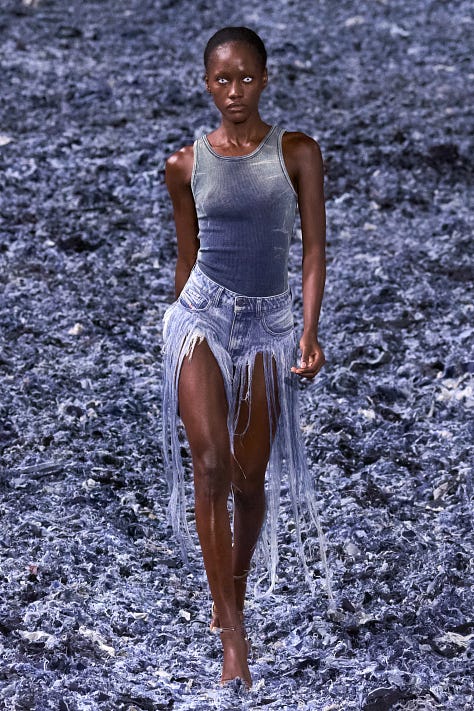




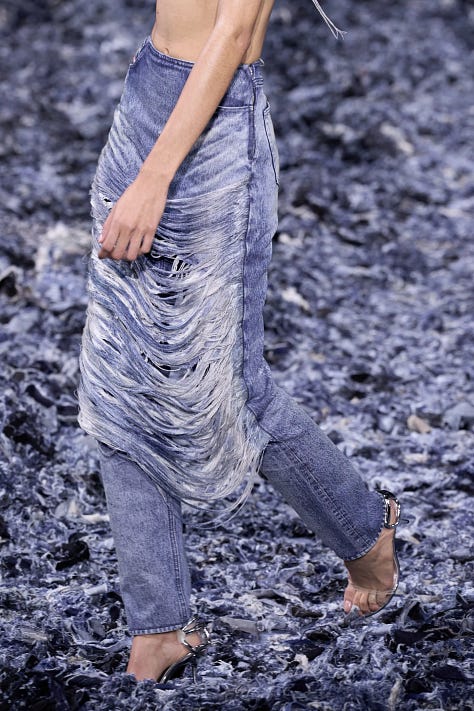
We wanted exploding creativity in each strand of the organic cotton that constituted the denim that walked the runway, fresh silhouettes, and otherworldly aesthetics resonating Diesel— that doesn’t just mean putting on ghostly contact lenses. These expectations are not anything over-the-top either, Glen Martens is an amazing creative director and Denim is a material with unlimited applications and re-invention qualities. There’s proof for this in Hoda Kova’s upcycling approach in extremely avant-garde silhouettes that are functional too, archival Jean Paul Gautier, the era of Alexander McQueen, Viktor & Rolf, Acne Studios, Commes Des Garcons, and Margiela’s iconic denim ensembles. There are prominent brands especially those operating at great scales in the zero-waste denim sector who are pioneers of fusing the sustainable approach with uniqueness, identity, culture, and heritage. One being Rkivecity who are masters at turning post-consumer denim into pieces of art that emanate stories and their creations aren’t just a materialisation of trends.
Diesel’s signature aesthetic of intertwining minimalism with an industrial, gritty touch was prominent throughout the collection— in its ever-changing aesthetic sub-groups that pointed towards the lack of cohesiveness in the entirety of the collection. After the first sub-group, the runway was then pervaded with a sudden burst of futuristic, industrial chic ensembles in multiple hues of greys. Diesel’s reputation for redefining urban wear with bold, grunge design choices was apparent in the over-extended voluminous cluster of fringes that wrapped around models’ necks and hung around their torsos. This sub-group featured metallic, textured plaid looks— that almost felt like liquid leather was wrapped around the models. It consisted of checkered skirts with halter bikini tops, fringe jackets and tops, formal vests— with fringes too— paired with ultra-mini asymmetrical hemmed skirts, trompe l’oiel bodysuits and dresses that optically accentuated the breasts, and distressed pants, jackets, and tops.
While the individual pieces— perhaps— narrated a story or a voice, the collection as a whole was disintegrated and only emanated chaos because of the infusion of multiple aesthetics one after the another. This could be seen with the inclusion of a ‘pop of floral’ mini dress—with pink fringes wrapped around the neck— amidst the industrial chic aesthetic of the “yet-only” second sub-group. With so much going on in one single collection it was hard to pinpoint what exactly was supposed to be the signature or the focal point for SS25— was it supposed to be the wrapped-around fringes? The distressed and frayed manipulation? The trompe l’oiel dresses? Was it perhaps the maximalist Hawaiian aesthetic— that the collection’s direction was all about towards the end— that seemed like a confused splurge of colours? Or possibly, just like any other luxury house; the bags and the accessories? If it were the condiments indeed— since bags and accessories drive the most profits for many luxury houses— those weren’t anything unique and notable but overly repeated versions of many other basic yet over-polished bags that feed into the trend culture.

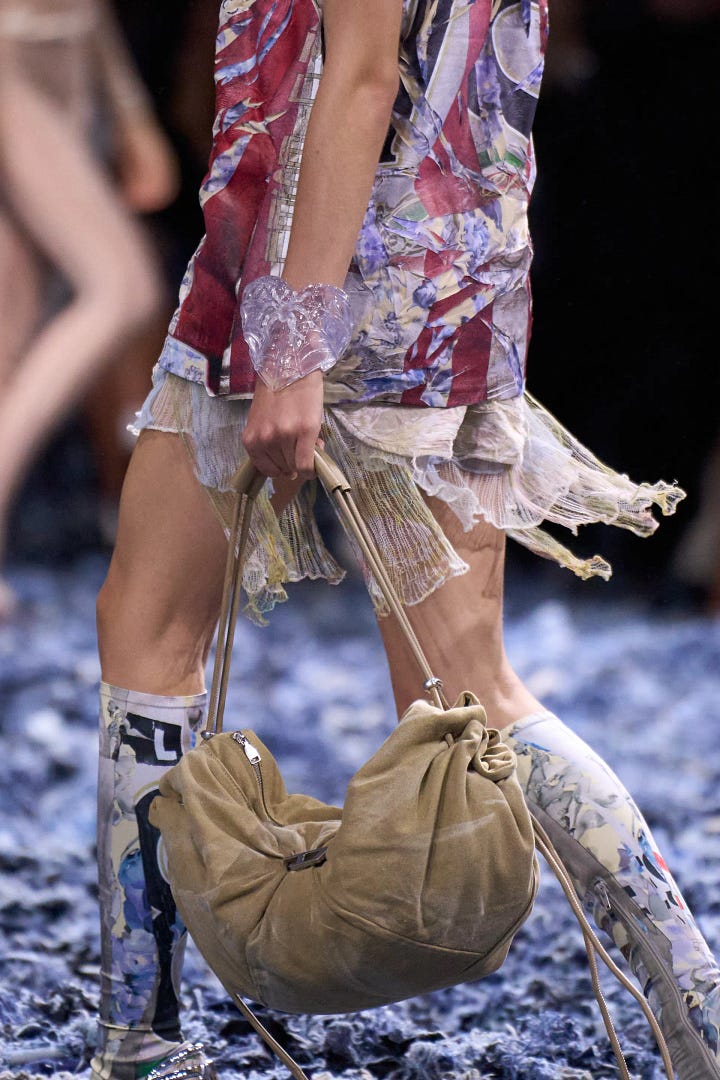
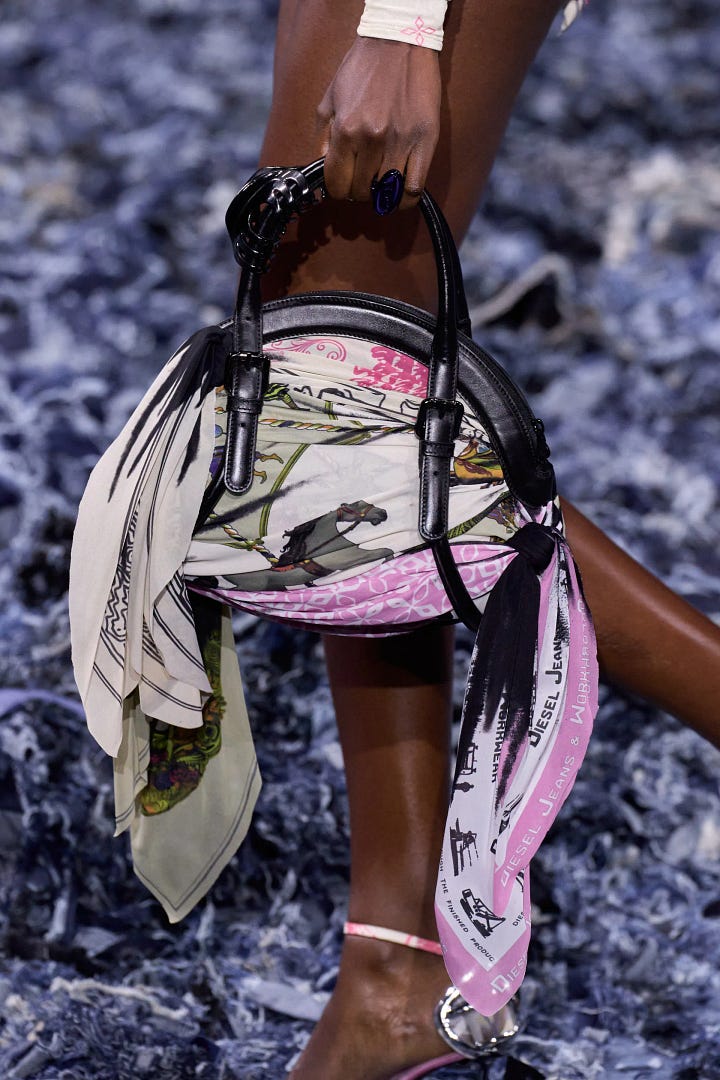

The subsequent sub-set shifted towards showcasing voluminous, heavily textured shredded outerwear perfectly exemplifying Diesel’s history of experimenting with fabric manipulation to create a rugged, industrial, raw, and lived-in look. Over the years, the technique of shredding manipulation has most definitely become Diesel’s signature mark as it sublimely emanates the feelings of rebelliousness that Diesel hones and aligns itself with. We spotted two such looks for SS25; a washed-out grey cropped jacket with an exaggerated, highly textured shredded collar detailing that almost looked like it was sculpturally made from cement. The next was a calf-length overcoat made with highly textured shredding manipulation of denim that took over the entirety of the coat in hues of acid-washed blue and green— making the coat look like it was woven together from sea moss and coral reels. Both these looks further emphasised Diesel’s deconstructive approach.
However, as I looked through the past 4 years shows, I noticed how this signature aesthetic hasn’t innovated remotely. Instead of incorporating its signature mark in a minuscule presence for each look— that many brands do, like the way Roseberry at Schiaparelli includes their signature keyhole detail in wholly ethereal and new ways for each collection— Diesel has rooted its whole identity in one supposed signature instead of making the signature a part of its identity. The brand is trying to tap into nostalgia each season and only playing itself on the thin string of attachment and emotional connection that people have with nostalgia. But is something even nostalgic if it’s repeated every season intermittently? From a product development point of view, it has been proven consistently that nostalgia isn’t a long-lasting promotional factor unless it's being mixed with major developments in the silhouettes and innovations of design direction every time. Perhaps, this is a sign for Diesel to reconsider its perpetual distinguishable approach in the intertwinement of silhouettes with its signature mark— and not the intertwinement of its signature mark with fresher silhouettes.
As the collection moved further it featured layered, deconstructed ensembles with a blend of printed graphics and delicate fabrics. This tapped into an aesthetic reminiscent of street art, chaotic graphic visuals and blokecore mixed with an artsy and feminine sensuality from the lingerie-like elements. Models were donned in eclectic graphic tees— in hues of hot pink, neon yellow, red, white, and blue— that spotted faded text for Diesel’s branding. The tops that leaned in towards the rebellious and chaotic ethos of Diesel were paired with the more feminine and delicate lace and knitted skirts with frayed edges and deconstructed hemlines. The models were accessorised in Y2K wraparound shades, and jewellery such as heart-shaped lavender resin cuffs— I loved this the most— paired with slouchy bags and graphic boot covers. This fragment of the collection was my absolute favourite due to the edginess that emanated from the bold graphics, and the playful mysteriousness from accessories which harmonised beautifully with the layers of femininity embedded in the sheerness and delicateness of the lacey knits.

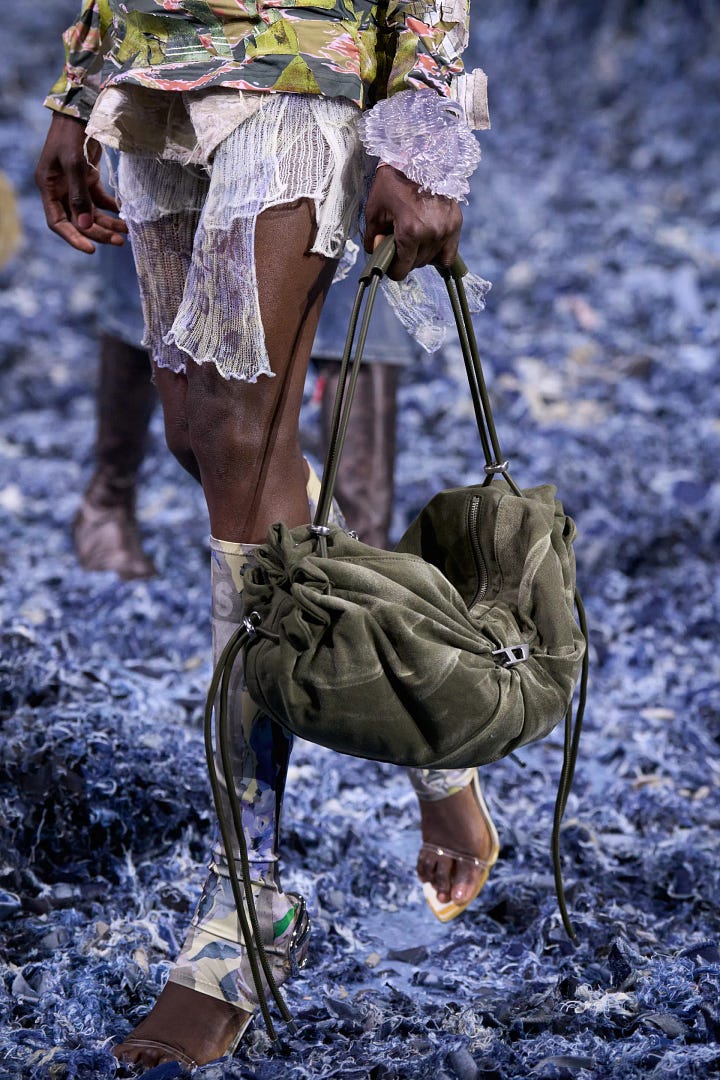
We further spotted additional distressed functional outerwear, vest tops and chambray slip dresses all of which were treated for them to have a camel shade. There were denim jacquards— the distressed neckline in many pieces was an eye-deceiving detail and was constructed by manipulating denim jacquards—, denim boucle, and a monkish denim gown with a voluminous skirt that cascaded down to the model's feet— all immersed in a unique patina. Since the collection was a chaotic overhaul, there were also form-fitting, head-to-toe knit ensembles in muted shades that featured distressing and intentional slashing throughout, and intensely draped asymmetrical tops, dresses and overalls with air-brushed effects on the fabric. And well, how to take the already-topped fanatic exposition up a notch? Just add in a sprinkle of leather coats, some more trompe l’oeil elements— featuring a visual illusion of a posy of necklaces engraved onto the tops itself— and all-black formalwear and you have yourself a party. The collection ended with a closing section of tied and wrapped jersey garments, printed and tucked with vintage archival Diesel scarves. These pieces shifted the pattern towards Hawaiian-beachy, dark romantic vibes, while also evoking a Y2K-pop genre music video moment from the early 2000s.
The collection’s pieces were all constructed with great craftsmanship and ‘individually’ they were spot on. Right from the distressing and fraying, the denim and multi-medium manipulation to the recycling and circularity approach that formed the basis of the collection itself. While I can't call this collection something that came from a ‘futuristic rodeo’— that many others have described it as— I’ll say this collection was another mundane nostalgia with a shower of colours, great foundations, and mastery in artistry and technique. “We’ve been doing a lot of different things here over the last few seasons, so I think this was the moment to remind everyone about our denim again,” said Martens. Keeping aside the lack of cohesion, the repetitive silhouettes, and the much-done always-seen design direction, Diesel did indeed remind everyone that they are great at ‘doing denim’. With Glenn Martens by their side, this ‘greatness’ was a bare essential result. In stark contrast to the chaotic visual elements, Diesel’s commitment to sustainability showed a clear sense of purpose. Glenn Martens' statement-making setup and collection did truly end up making a huge proclamation on denim’s environmental impact— as both a pre and post-consumer textile. Perhaps, we can hope and look forward to a much-deserved, brand-new Diesel makeover in a nearing future.

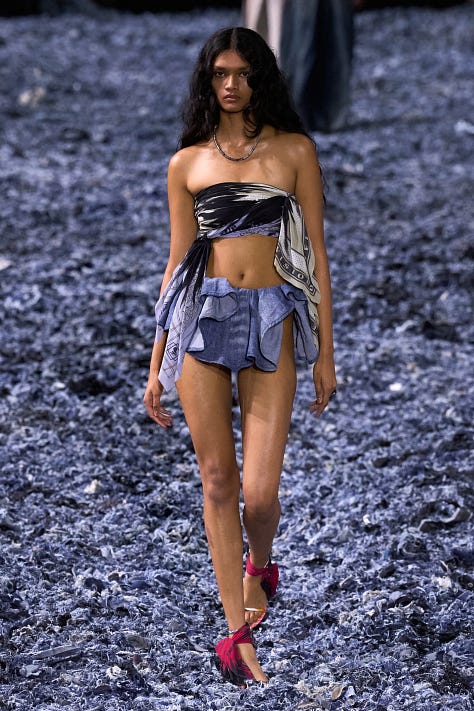
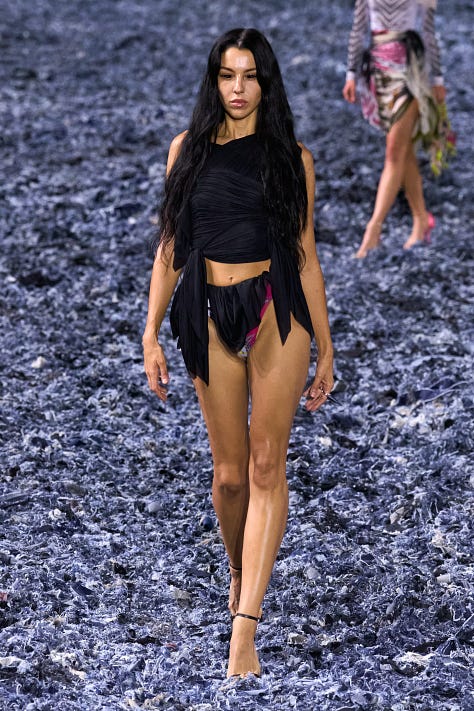
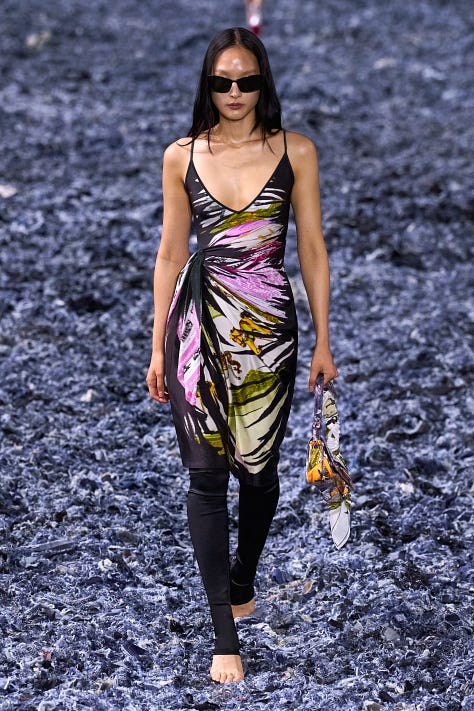
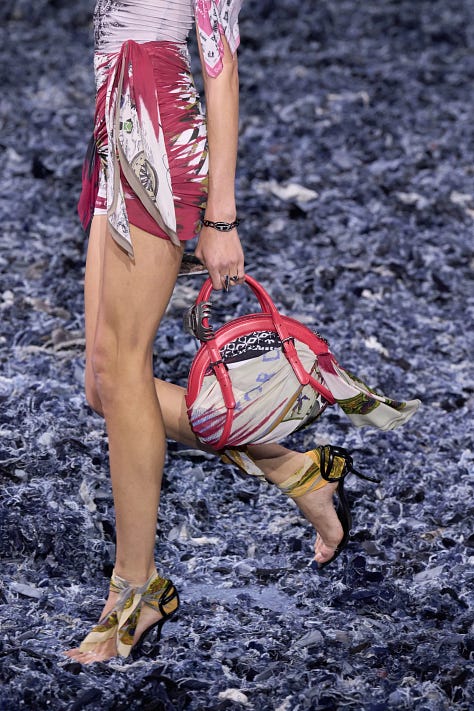





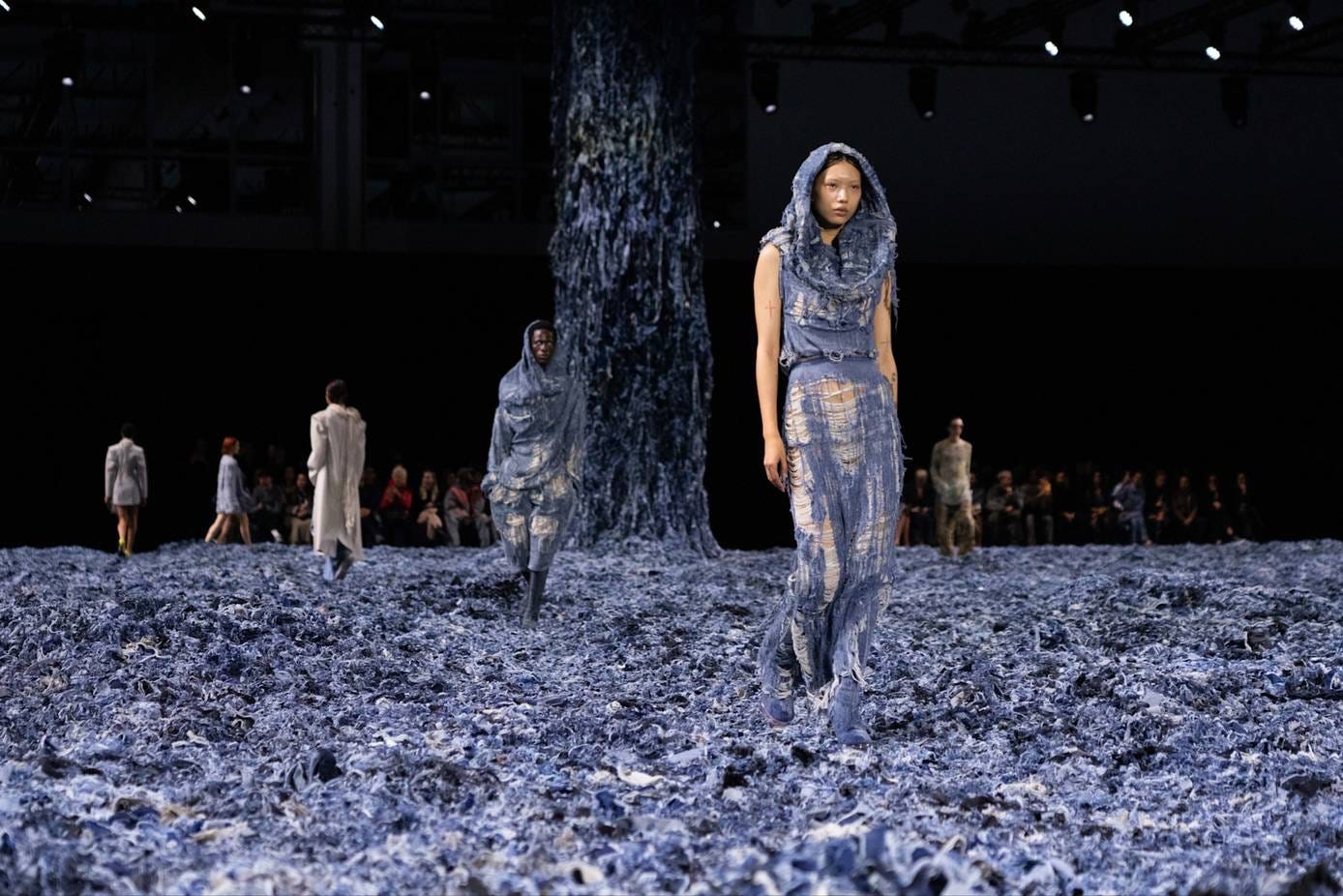

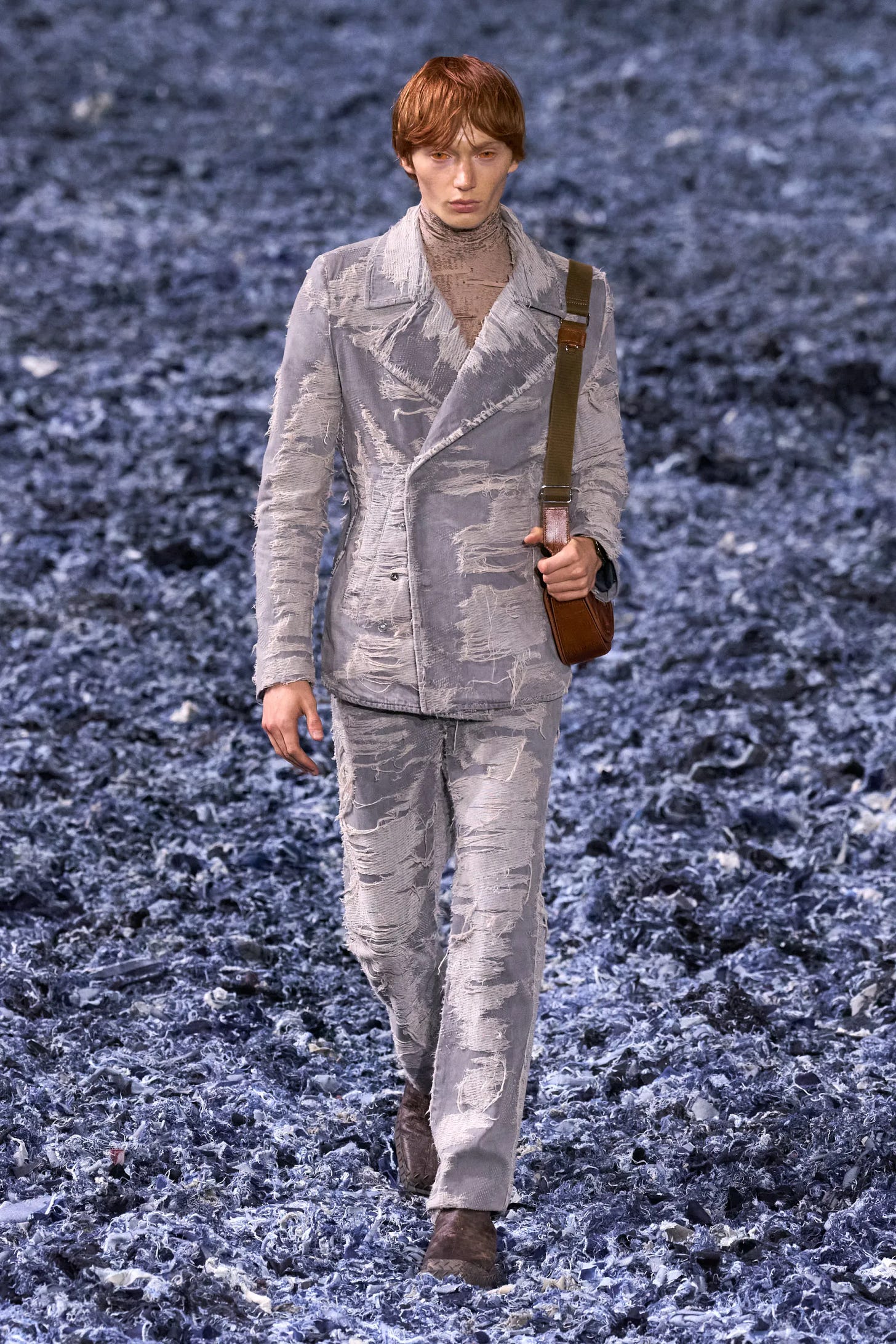
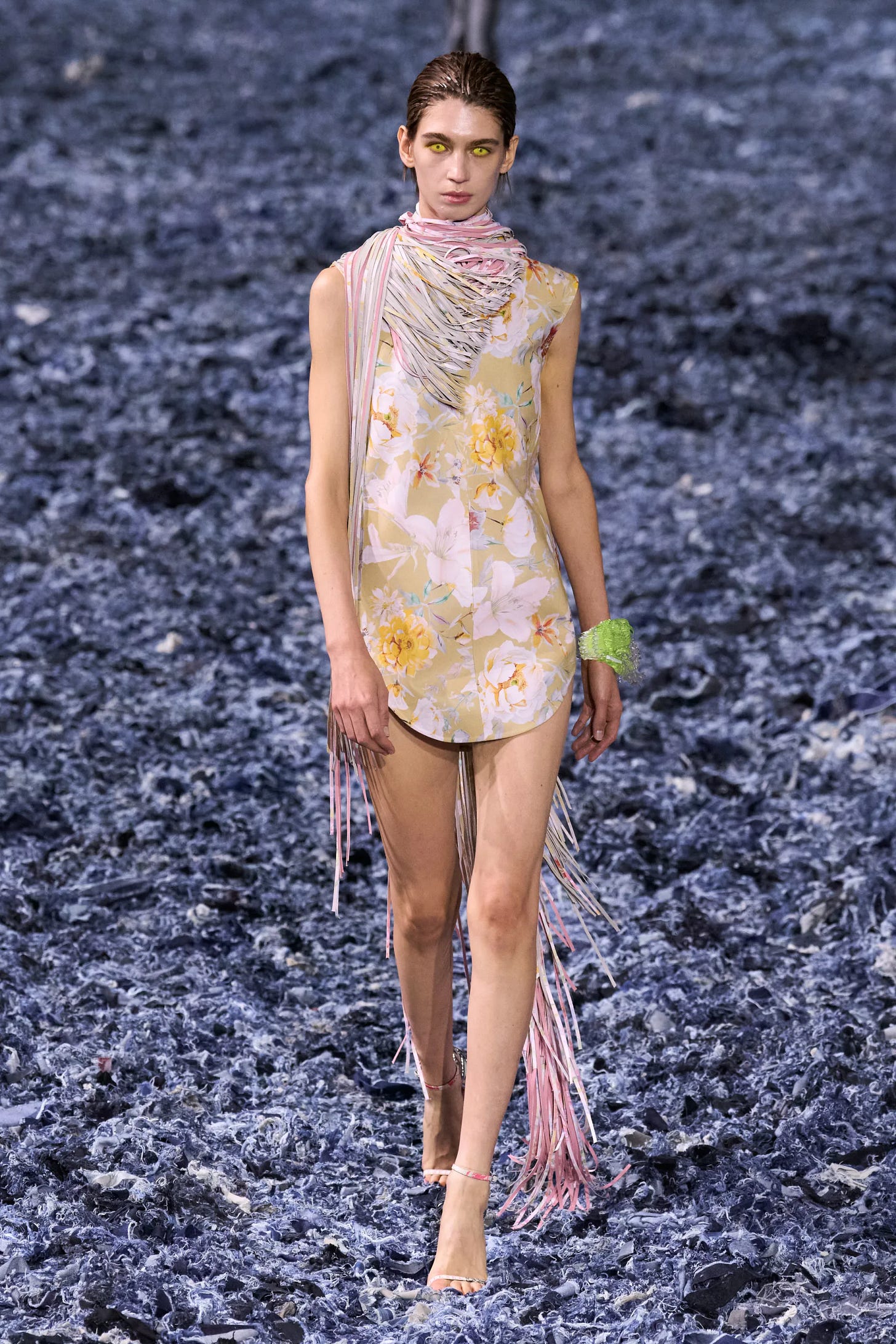
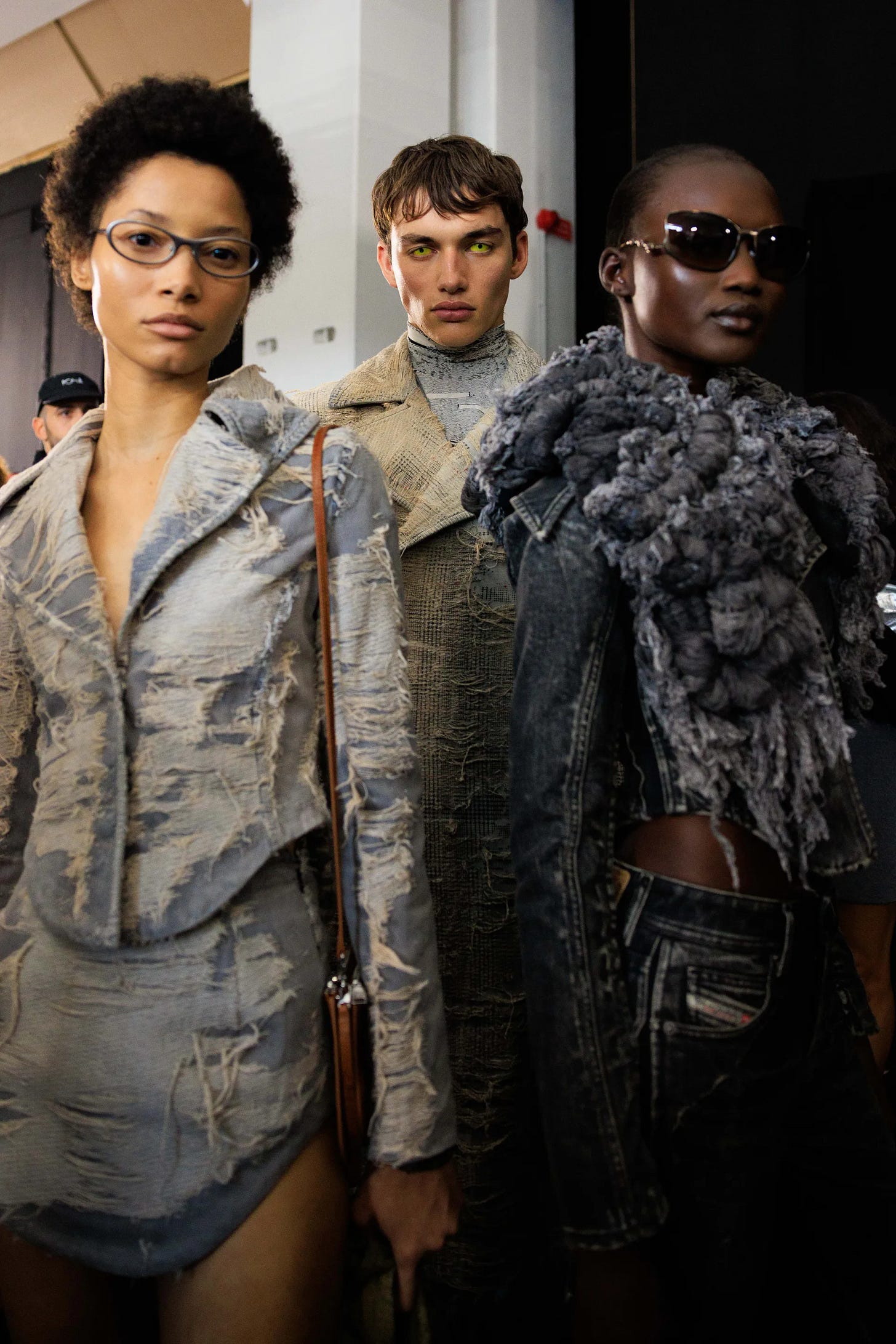
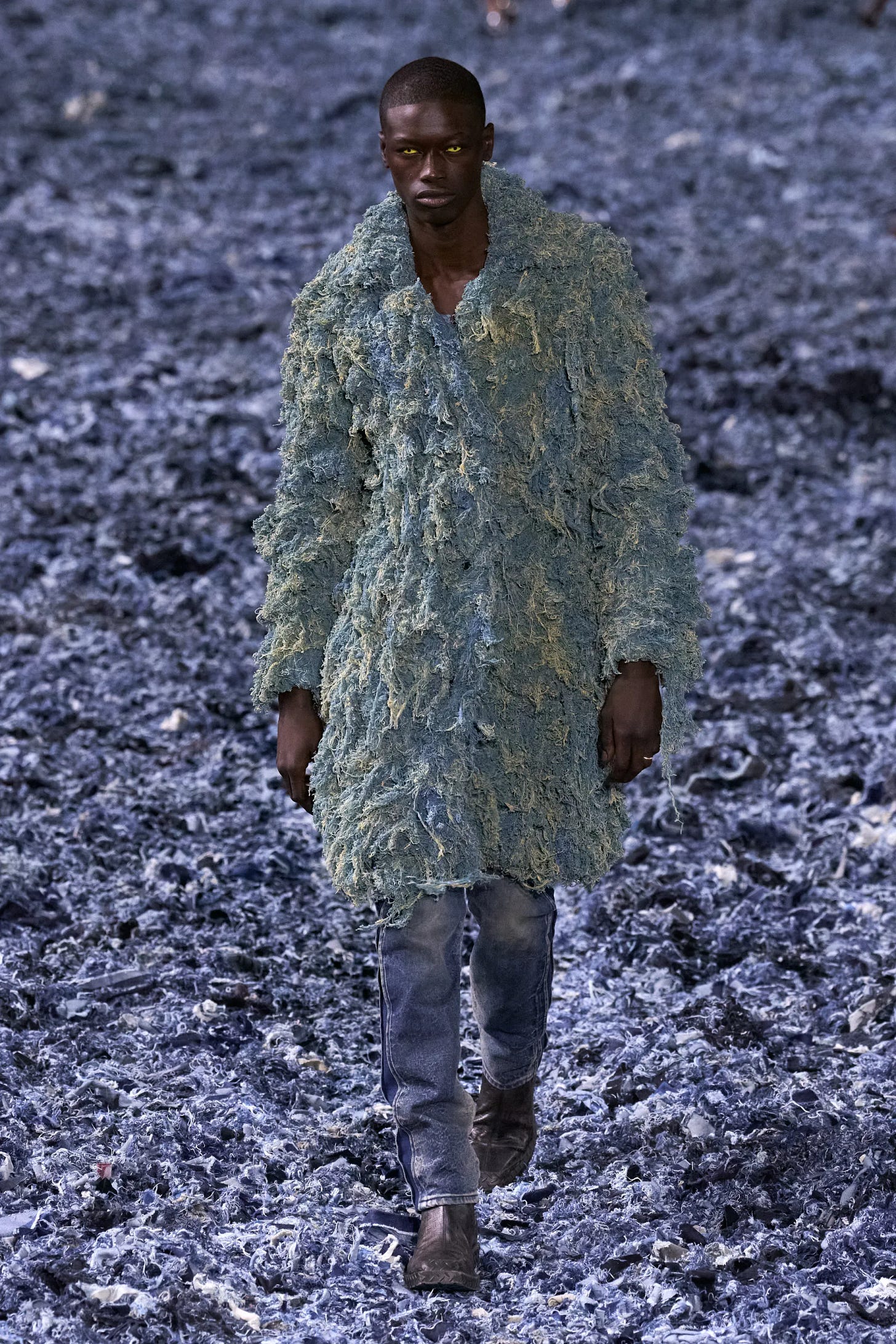


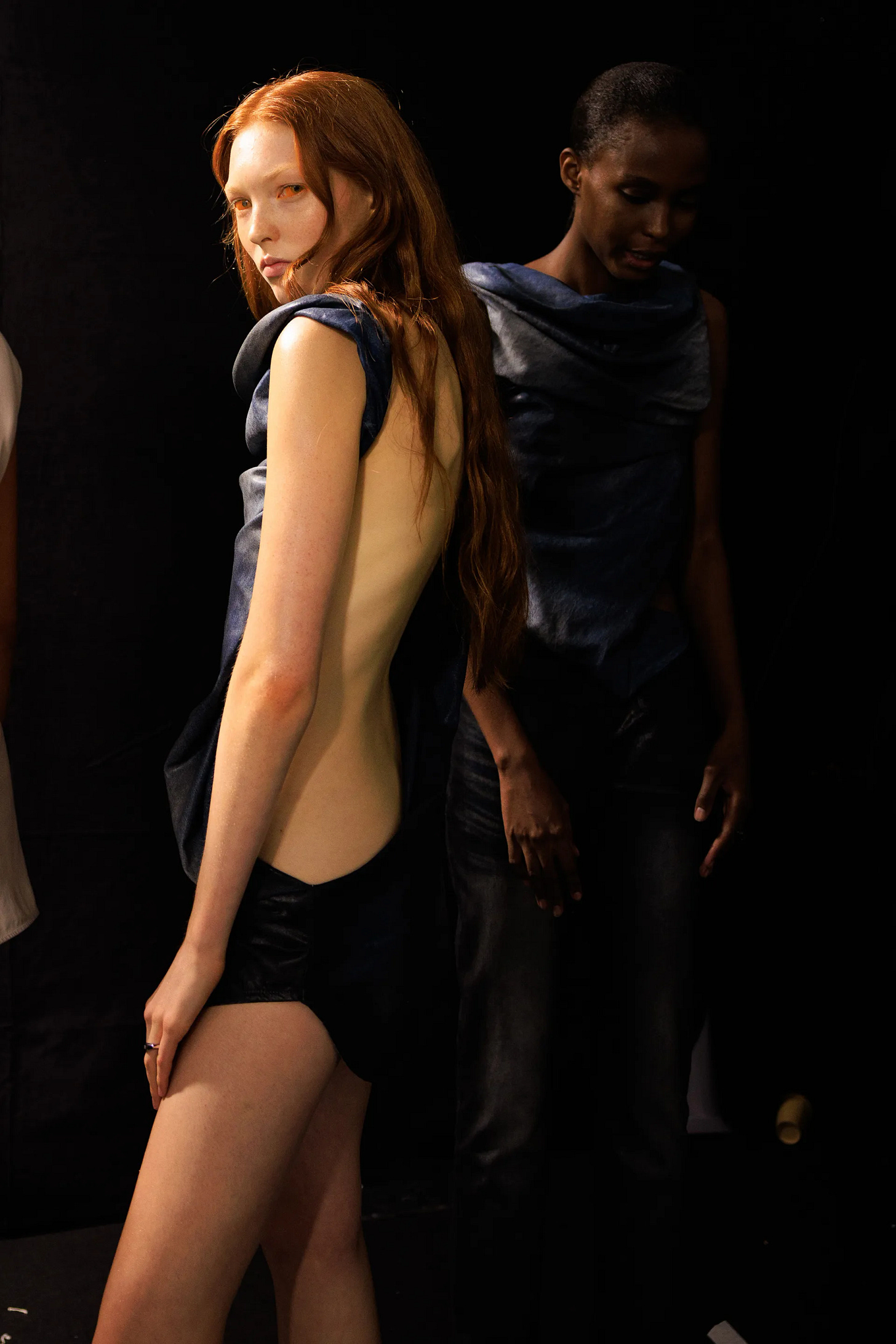

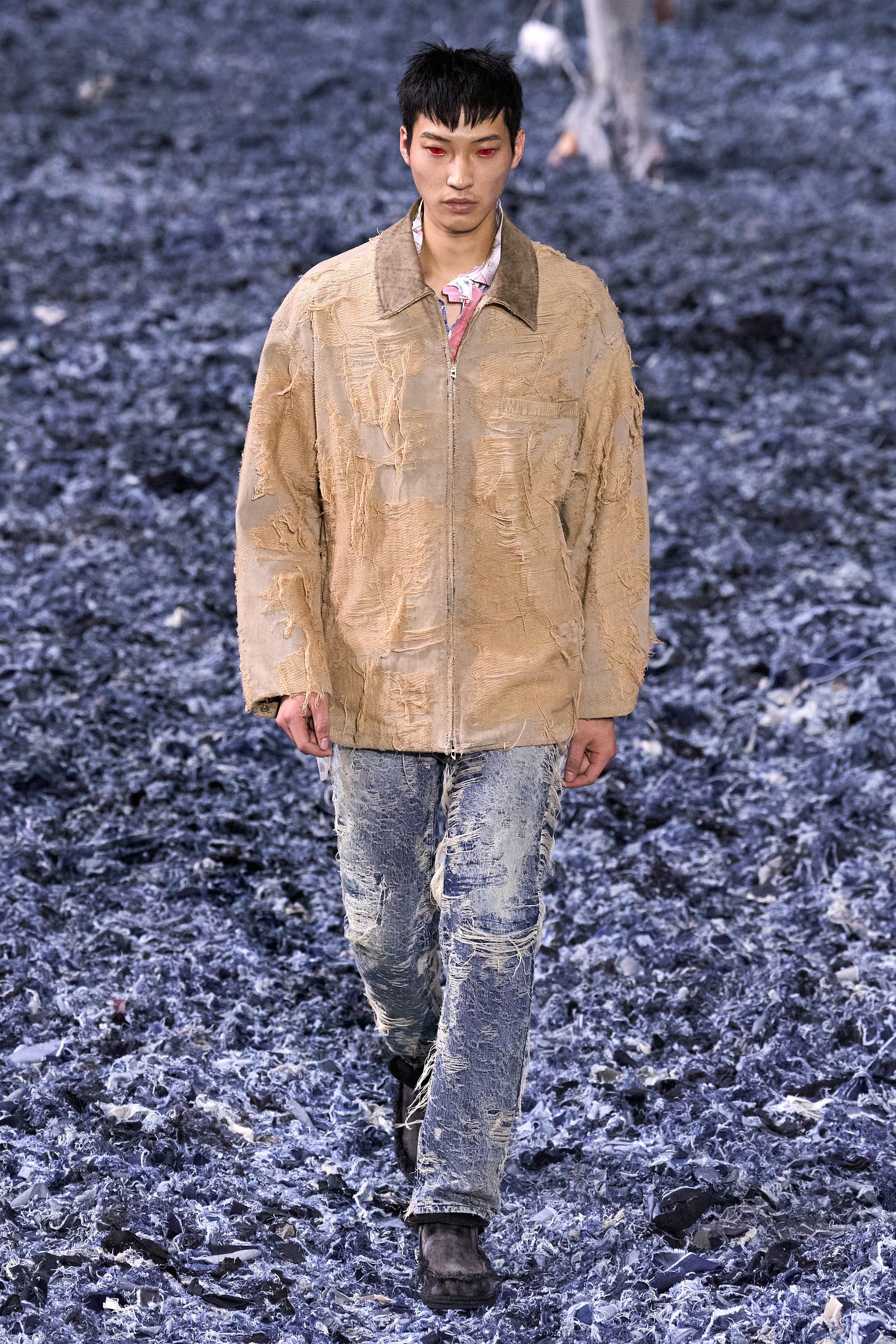
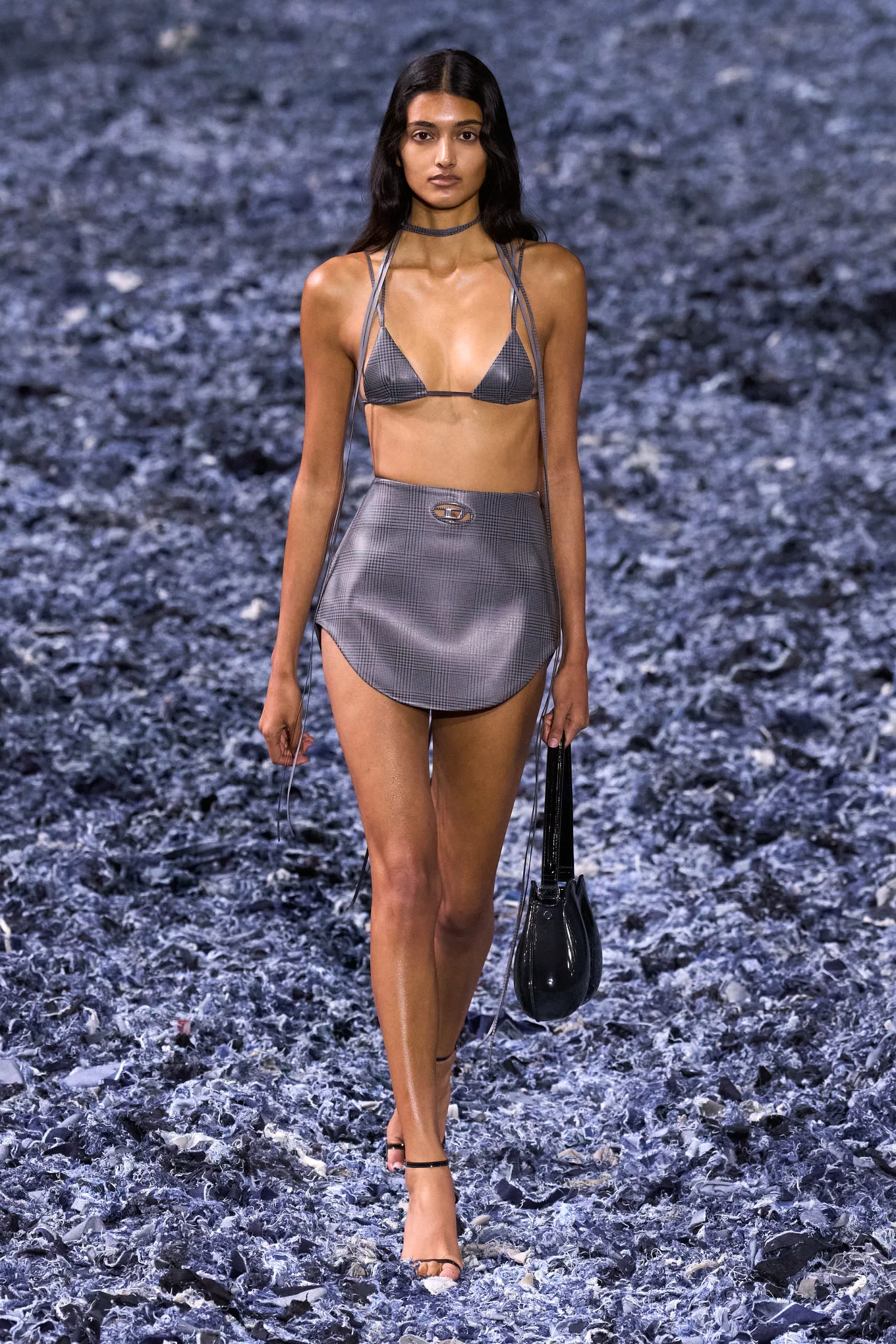


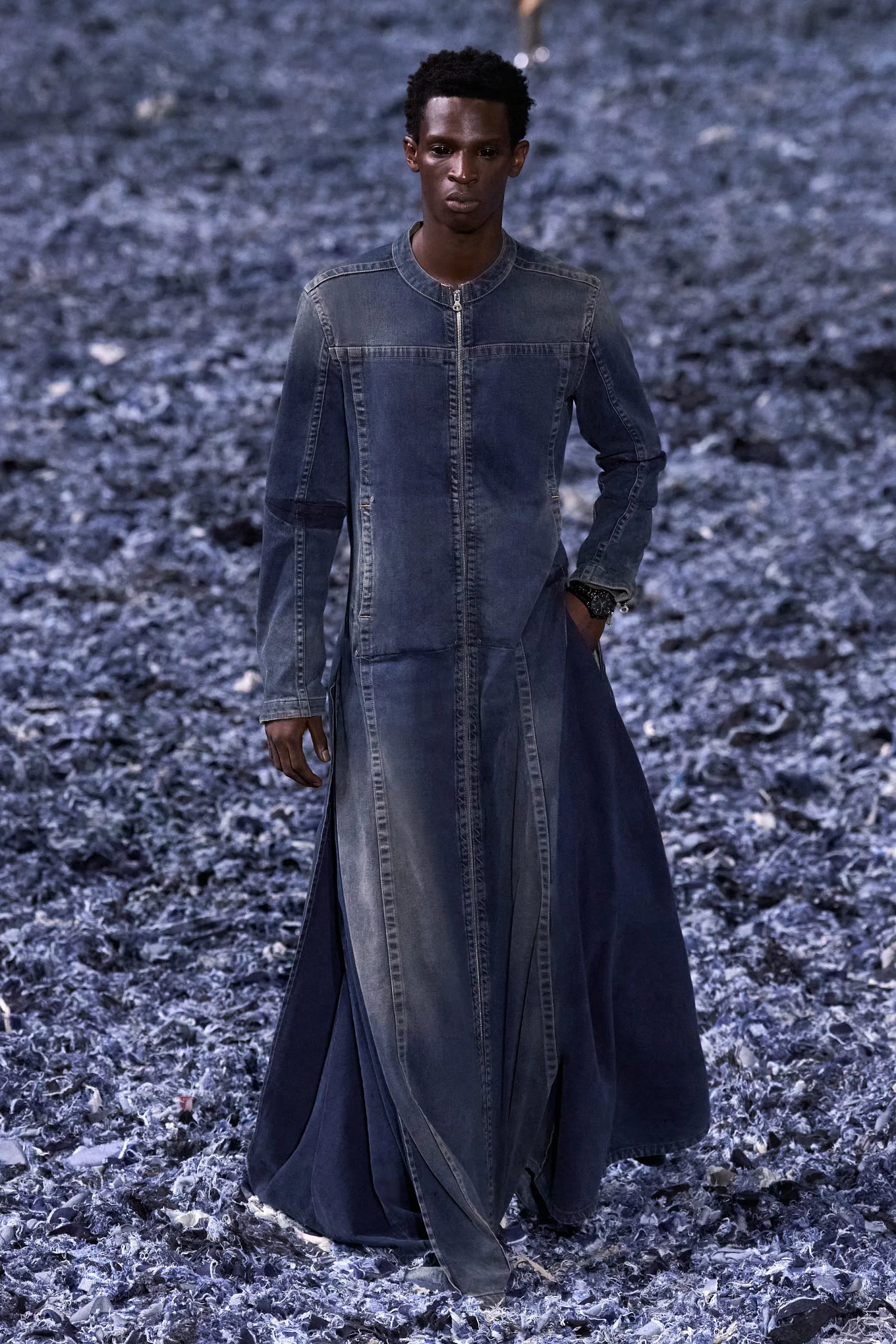
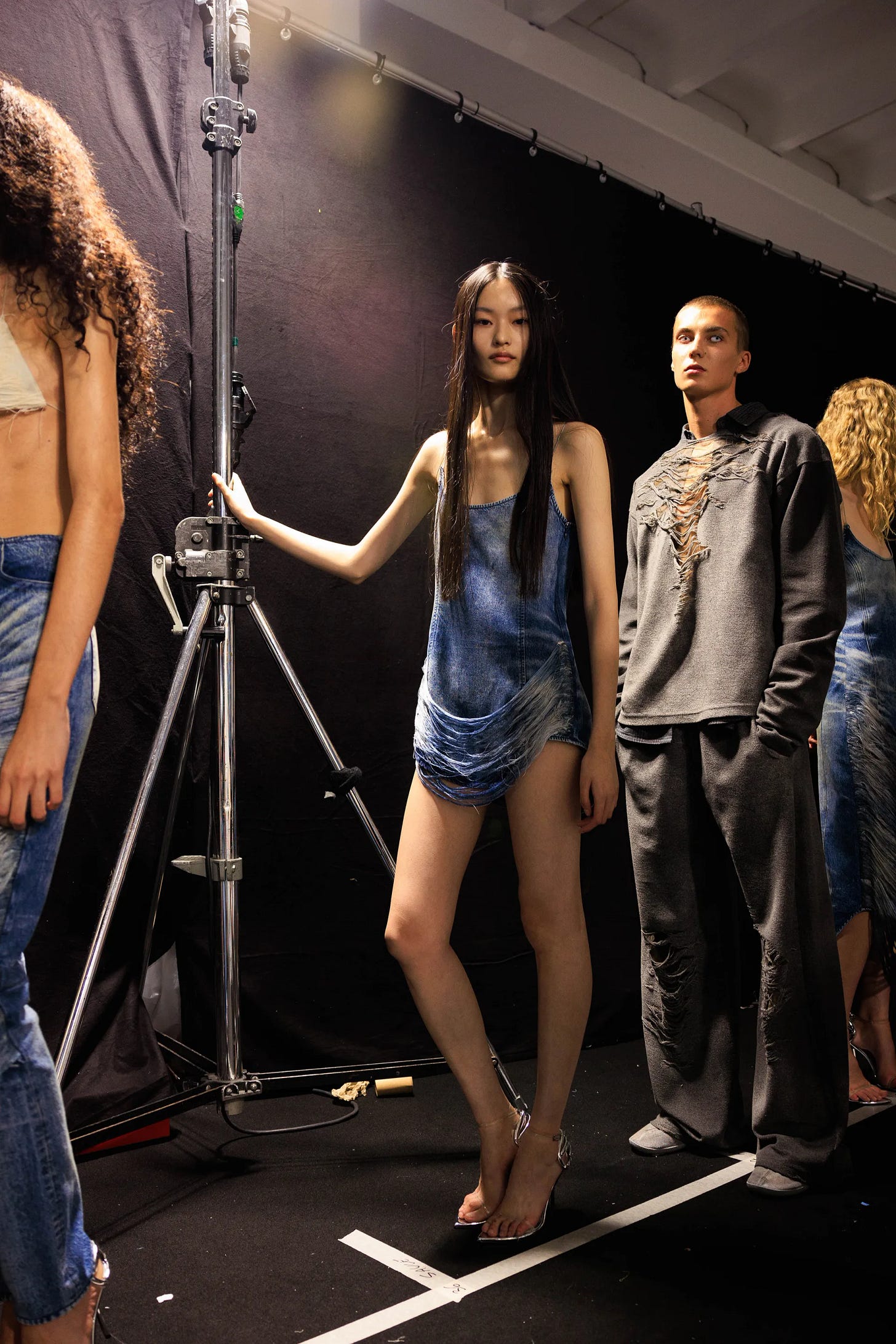
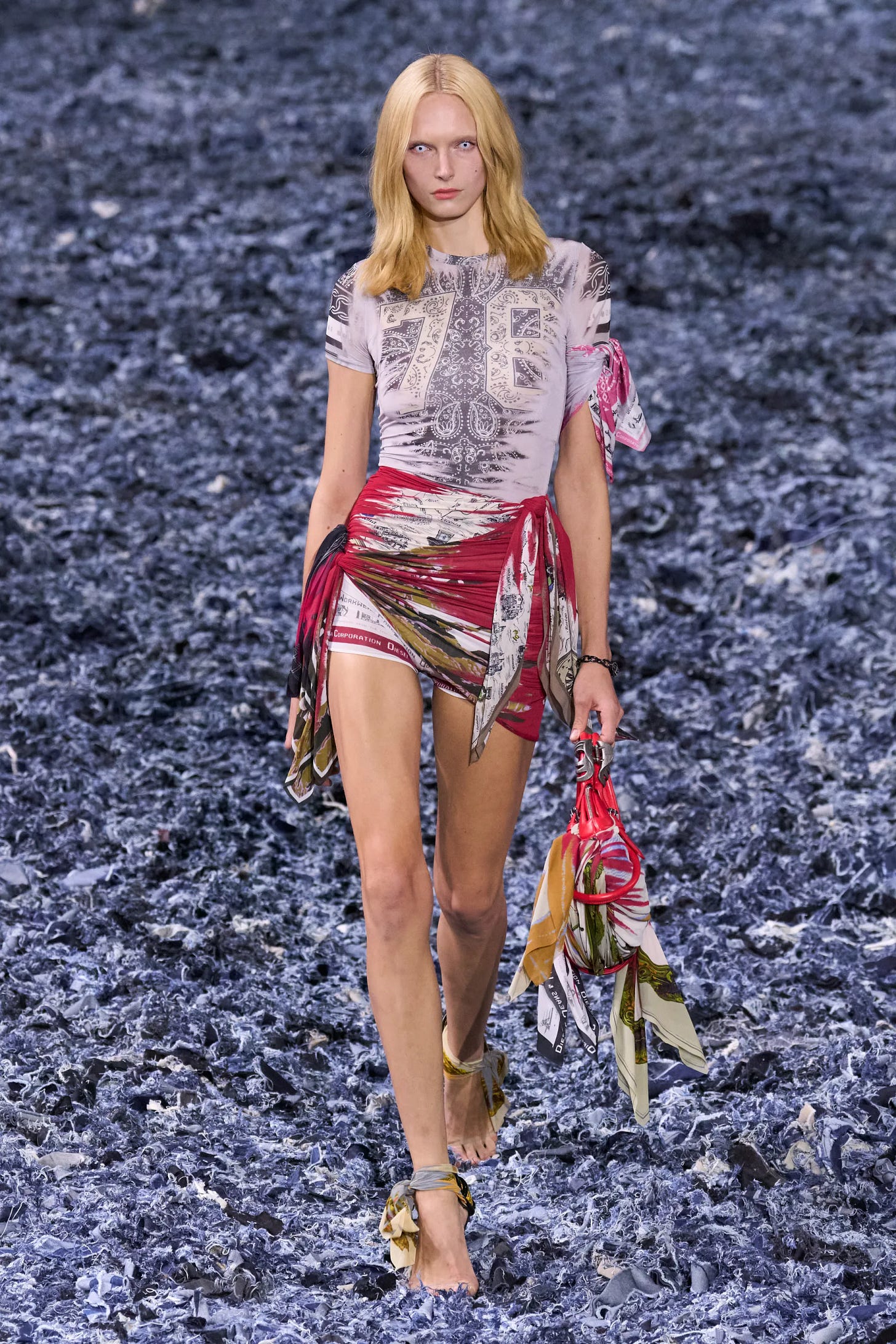
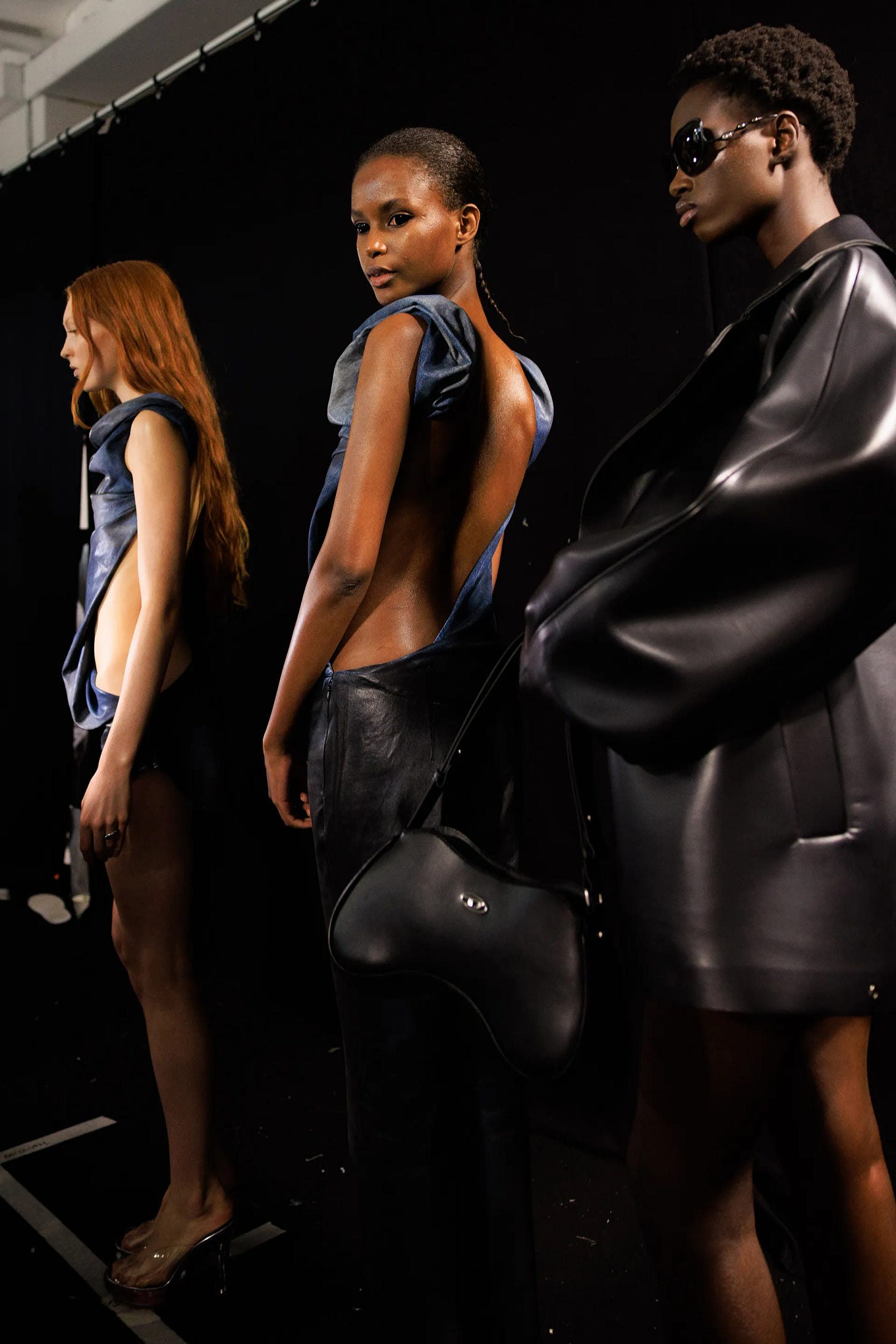
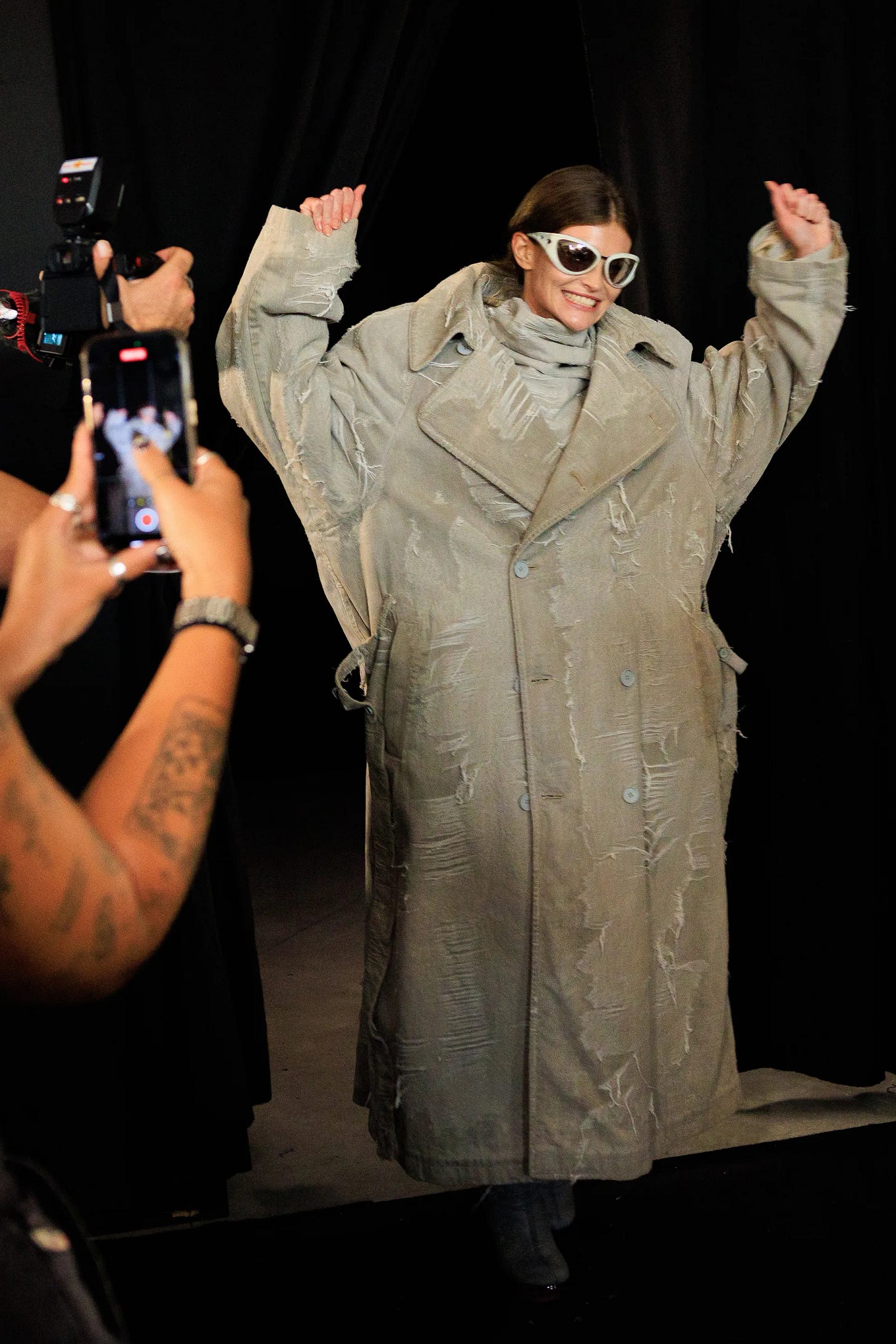

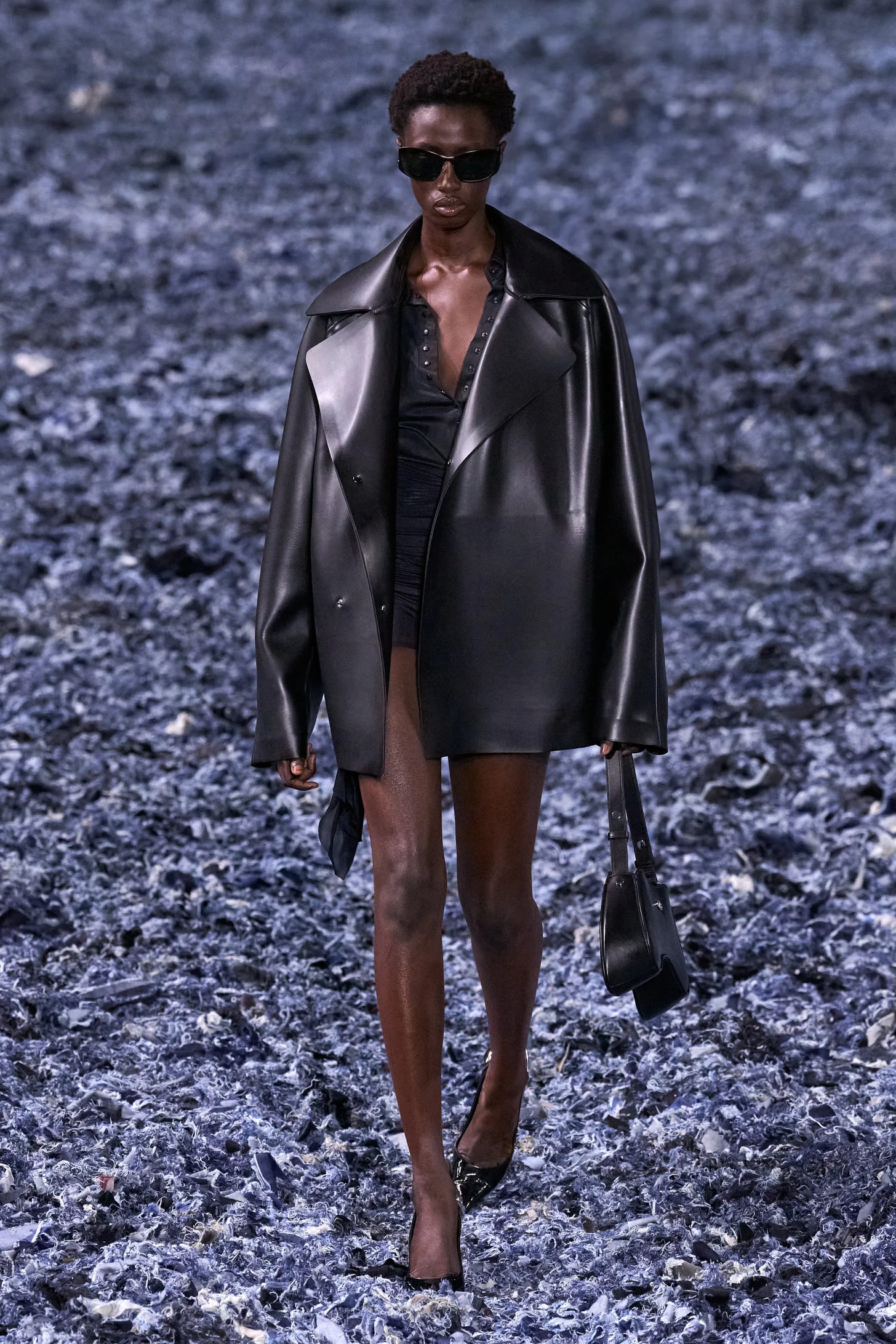

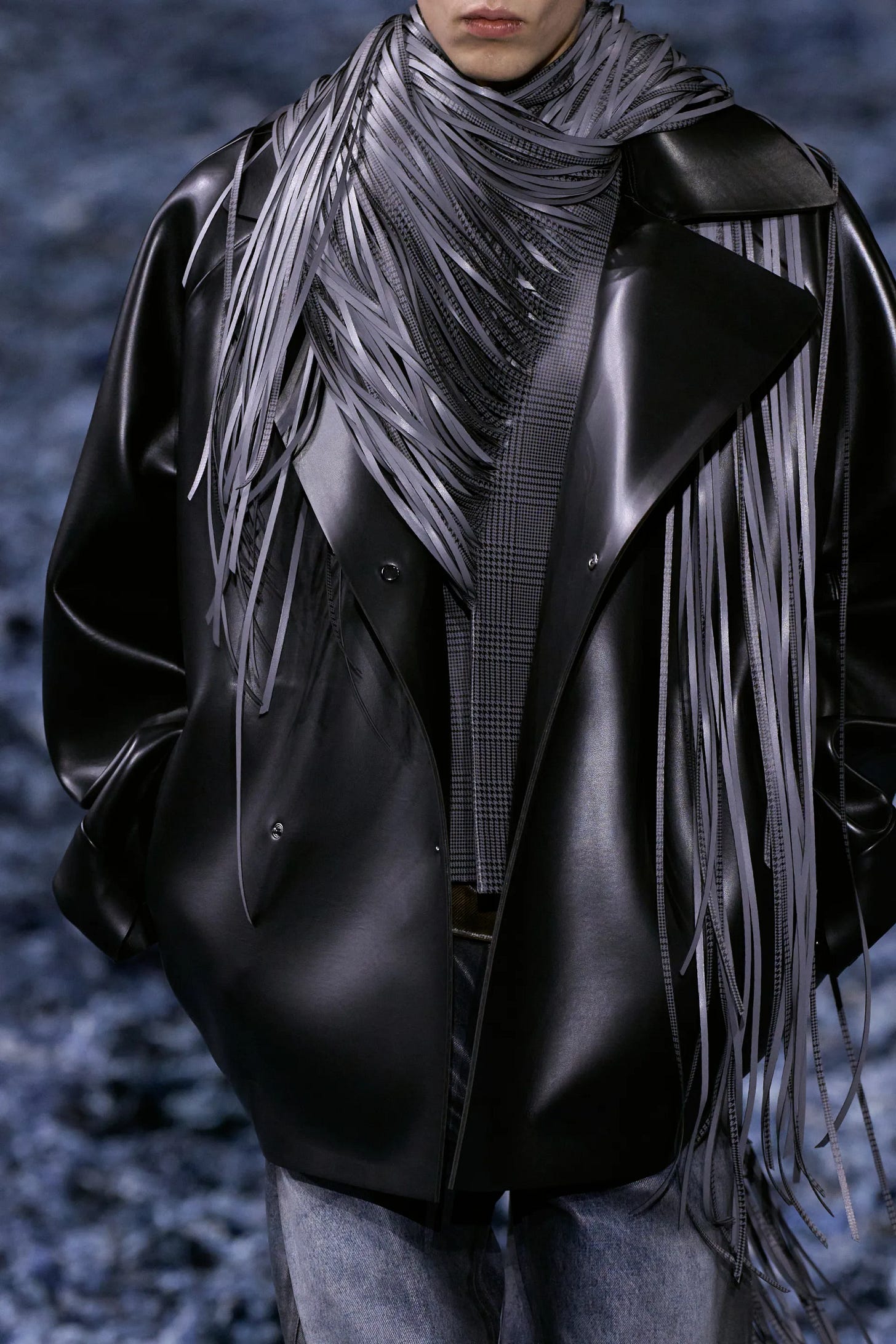

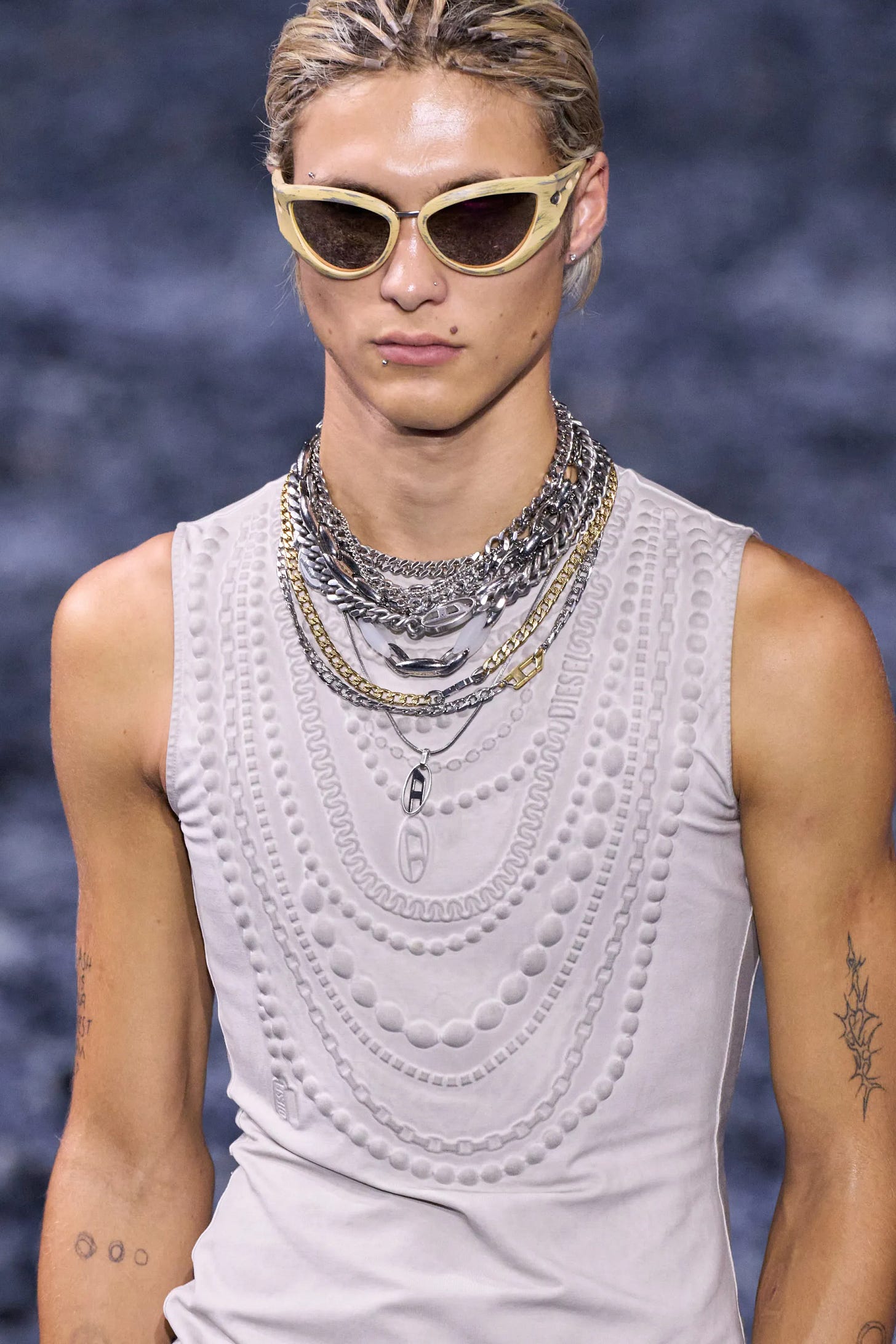

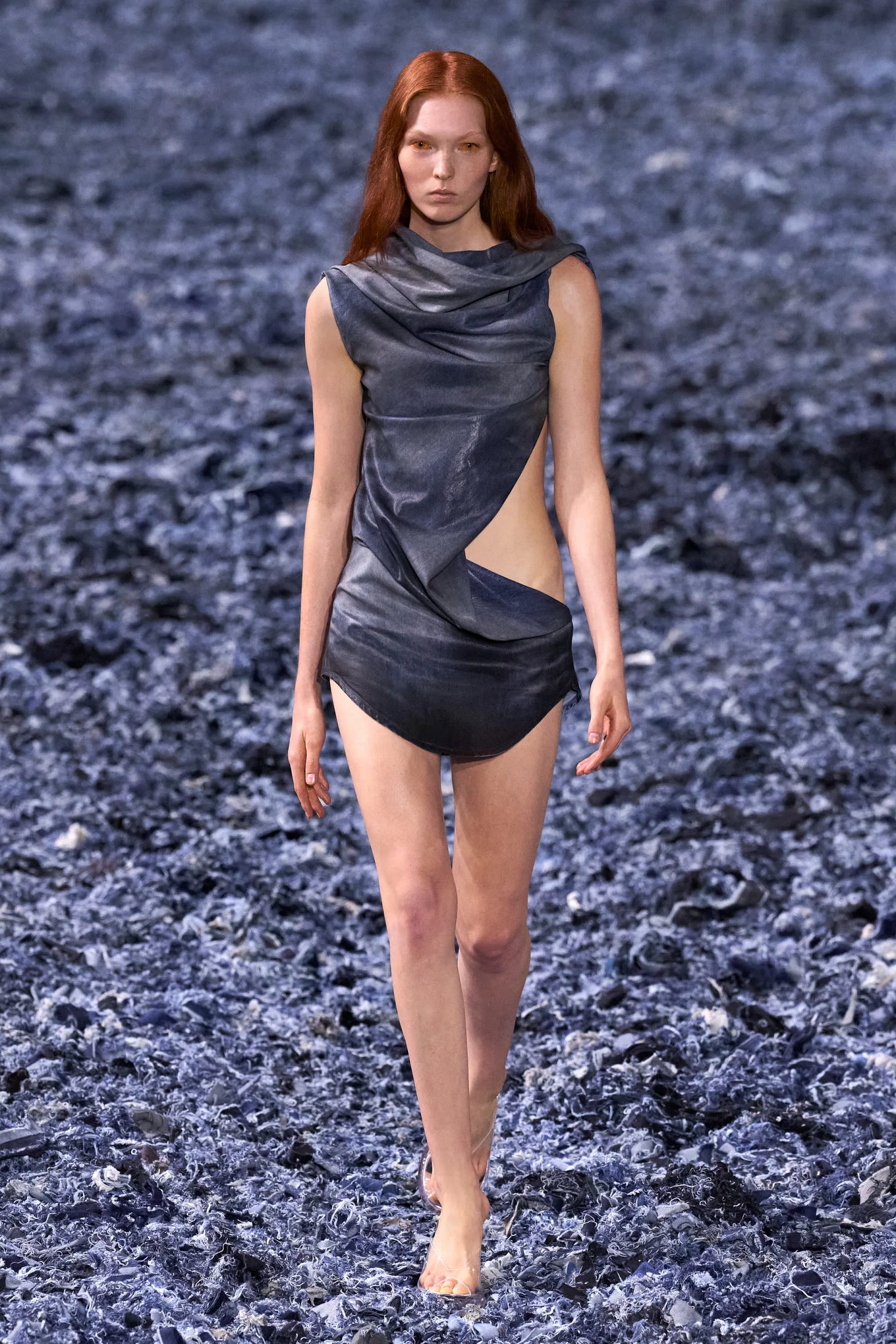

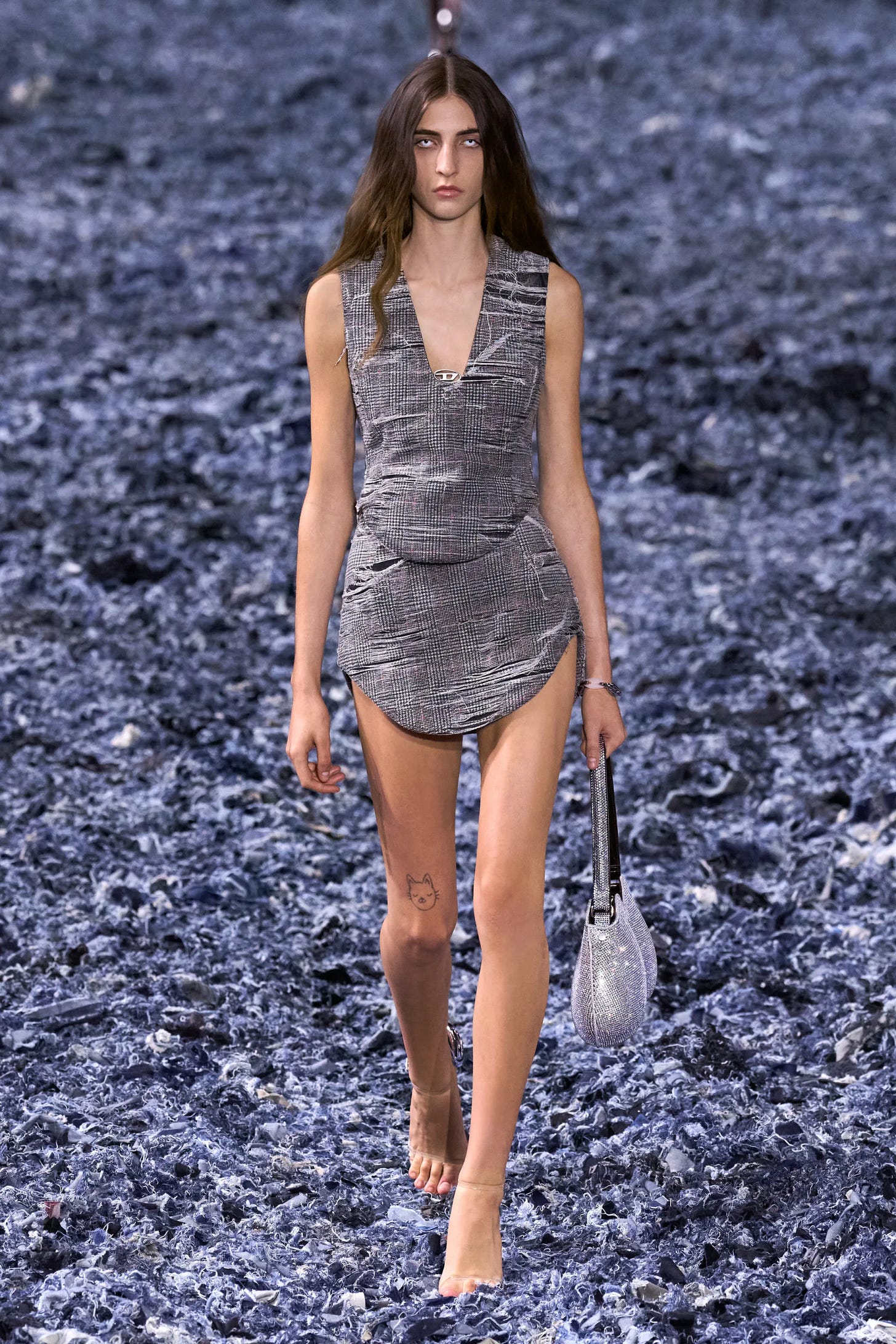
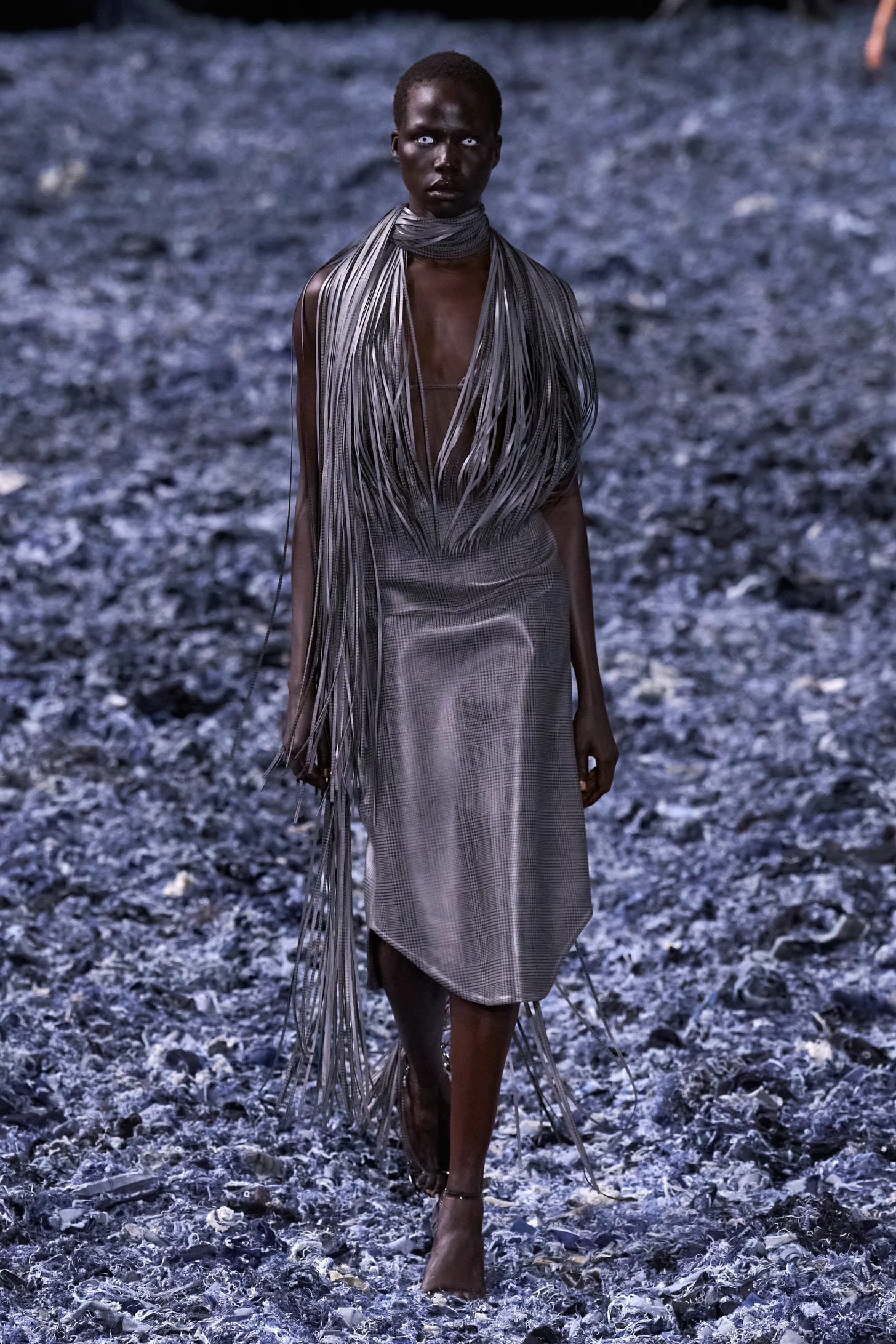

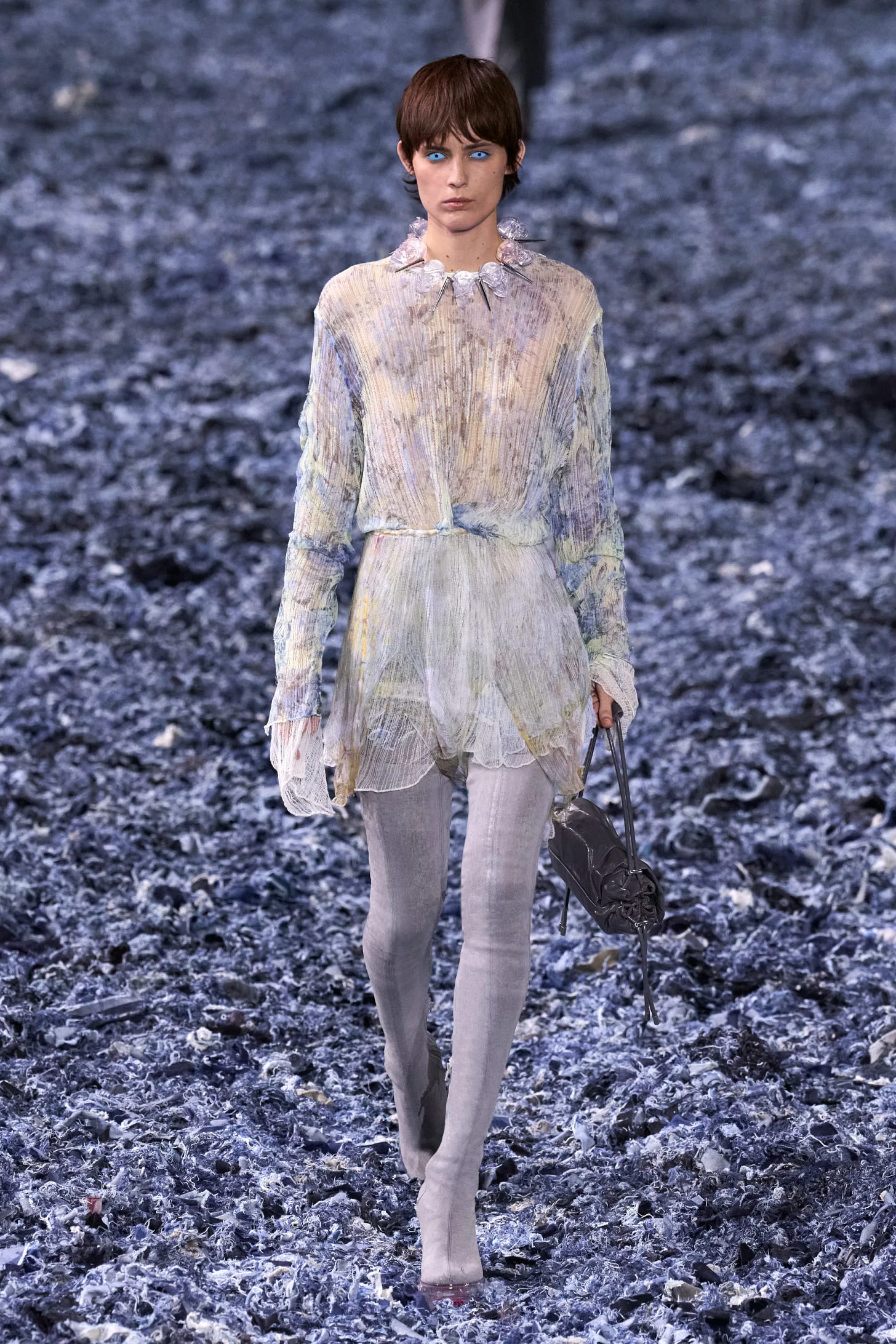
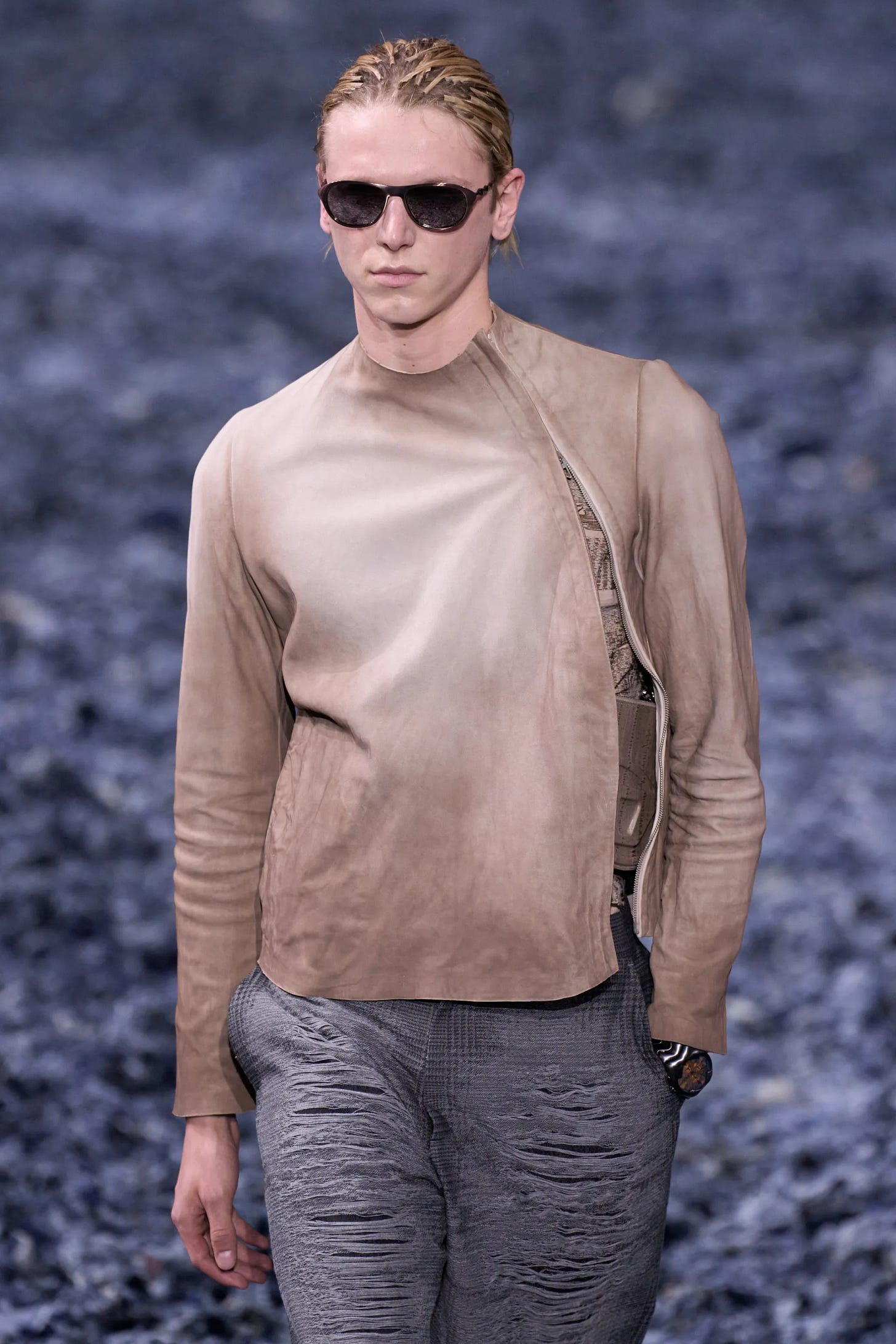
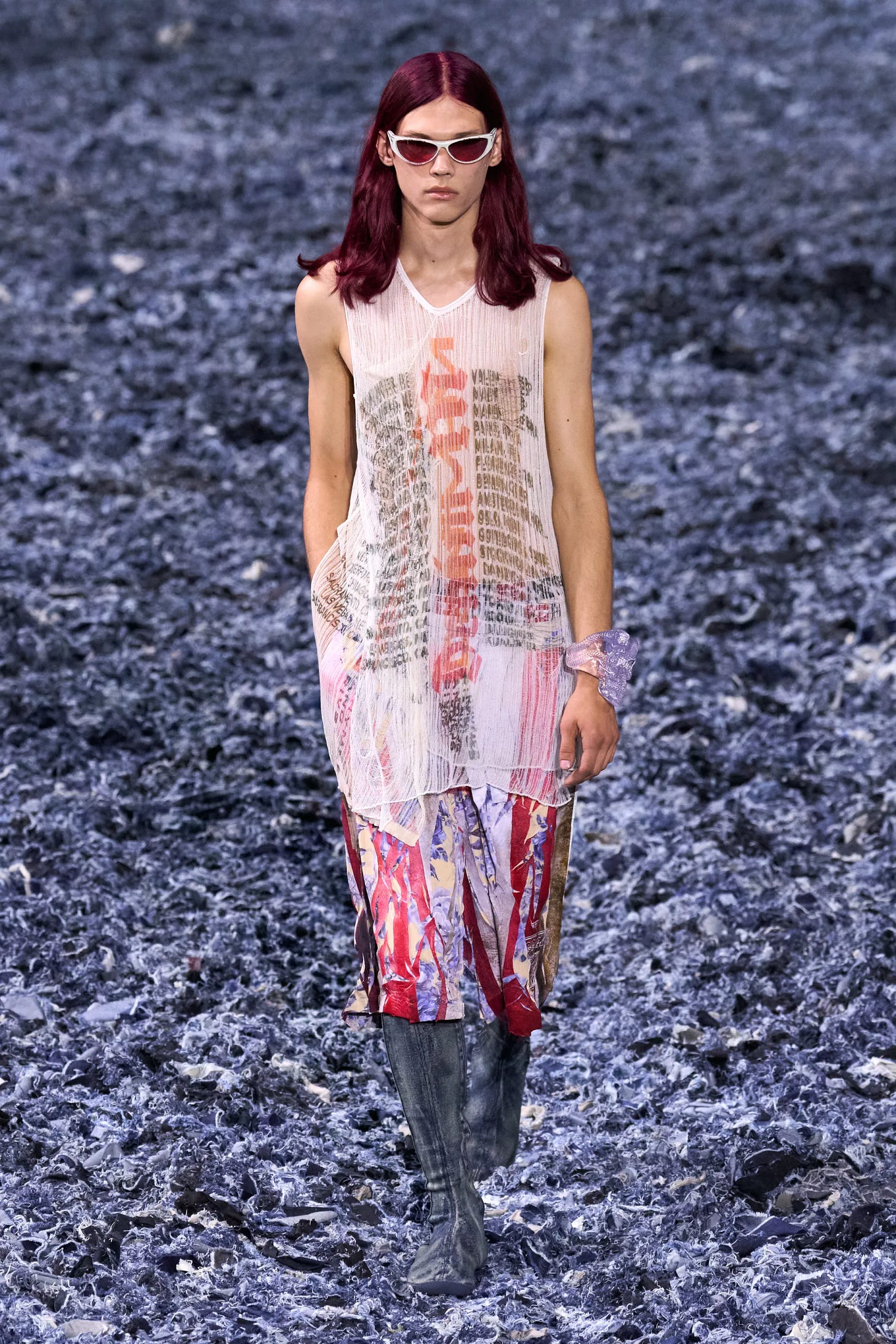
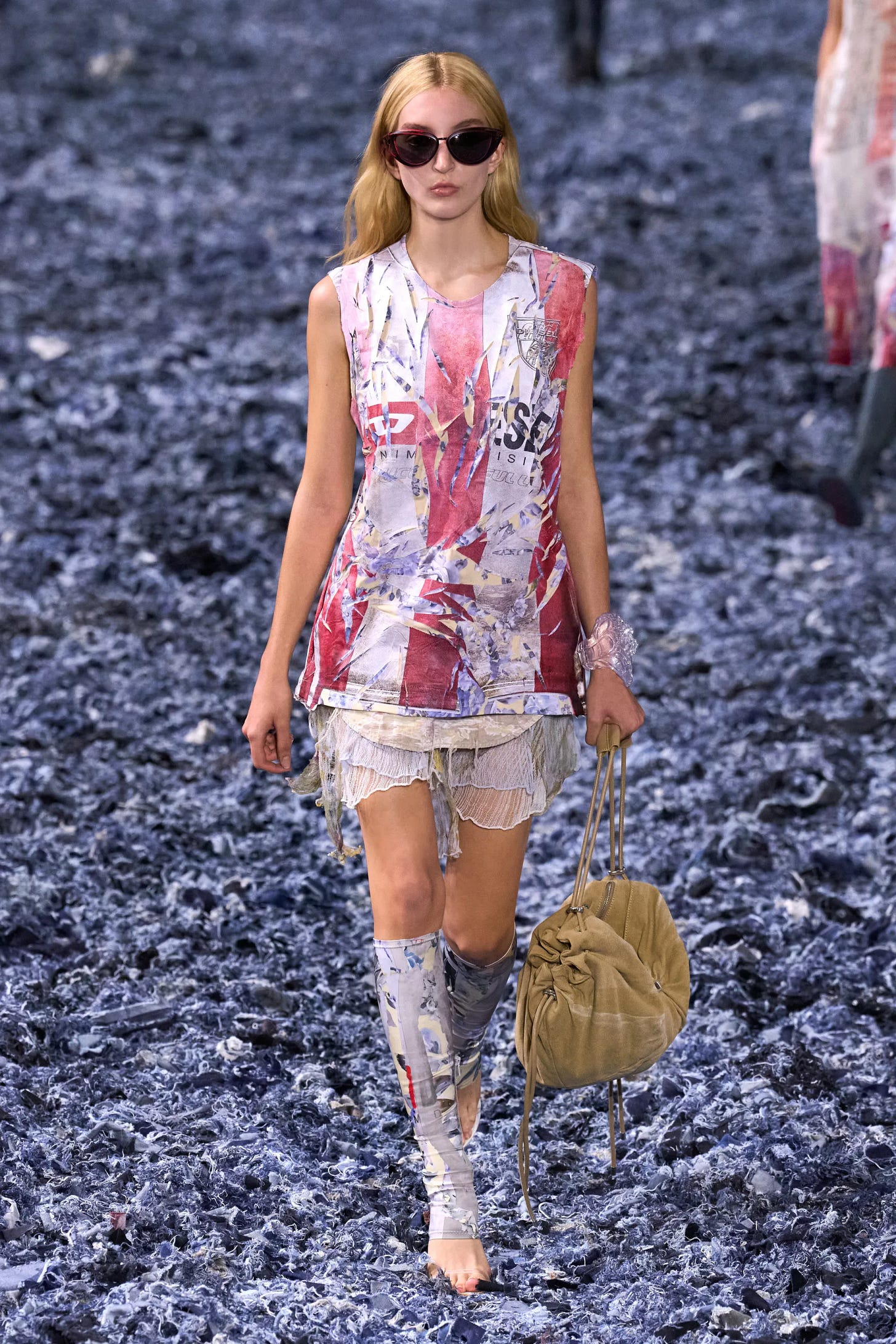
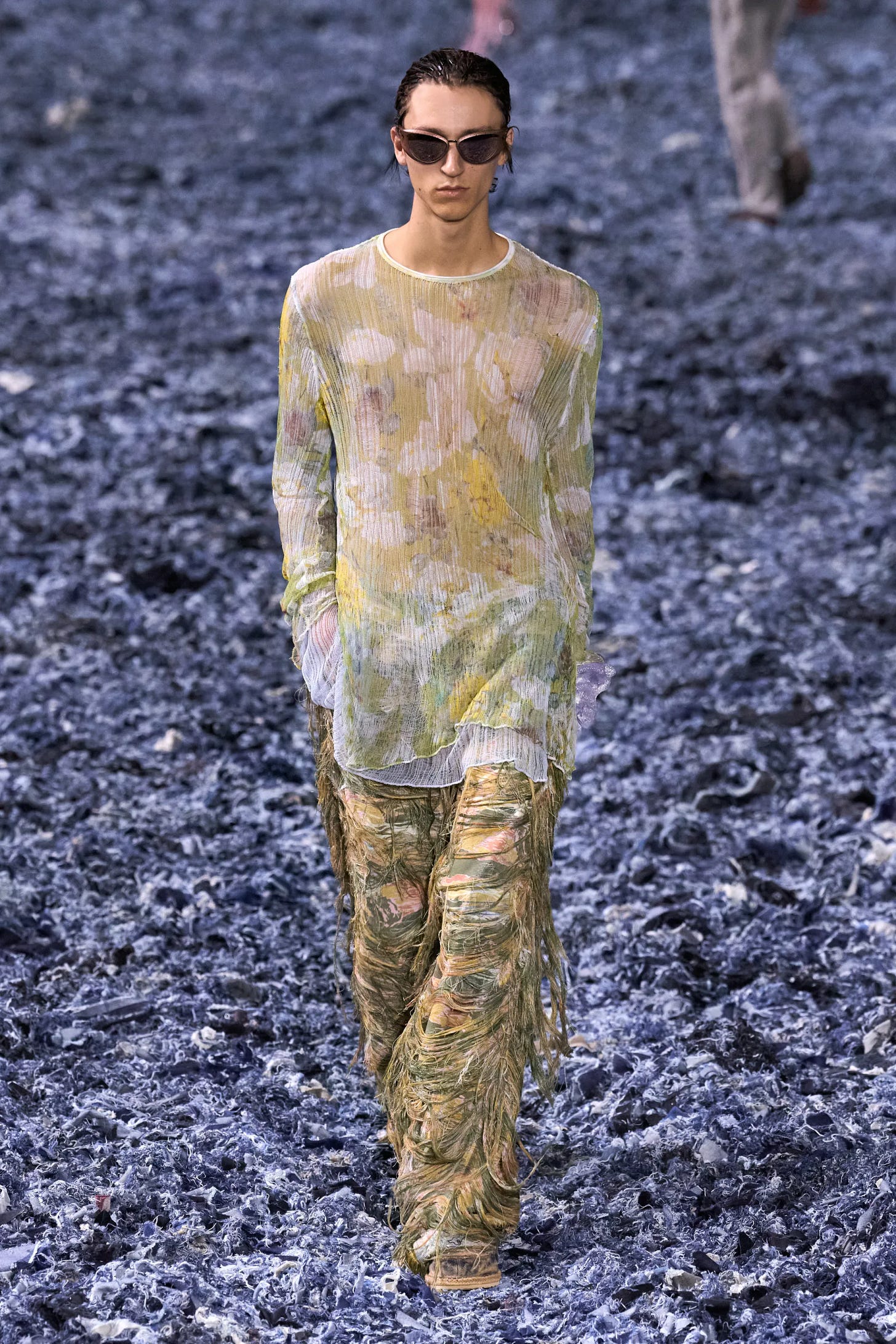

I agree with your statement regarding looks 1 and 2. I think that although the pieces look basic and there’s cheaper alternatives their loyal consumers would purchase them regardless as a symbol of status rather than necessity.